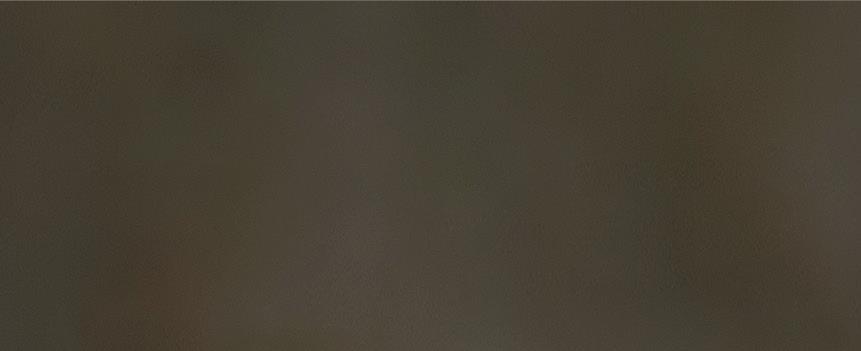





















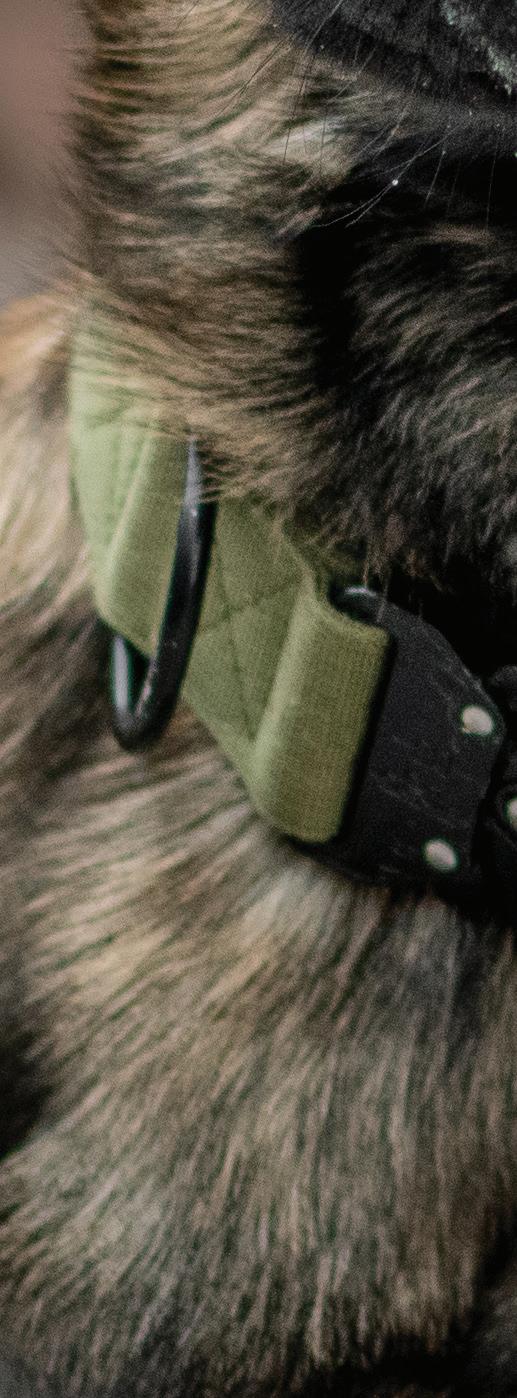

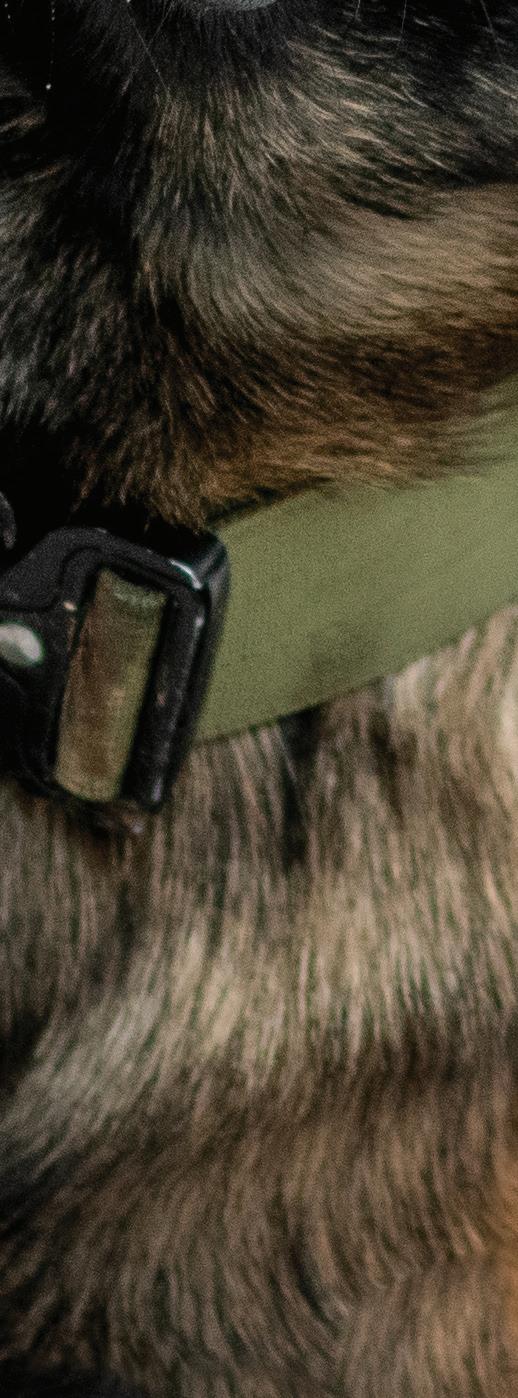
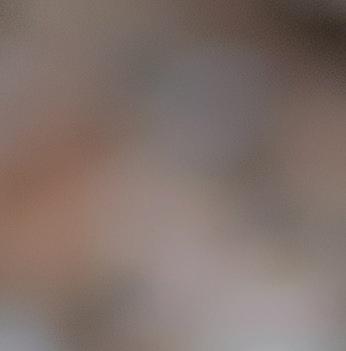



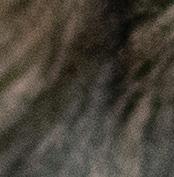




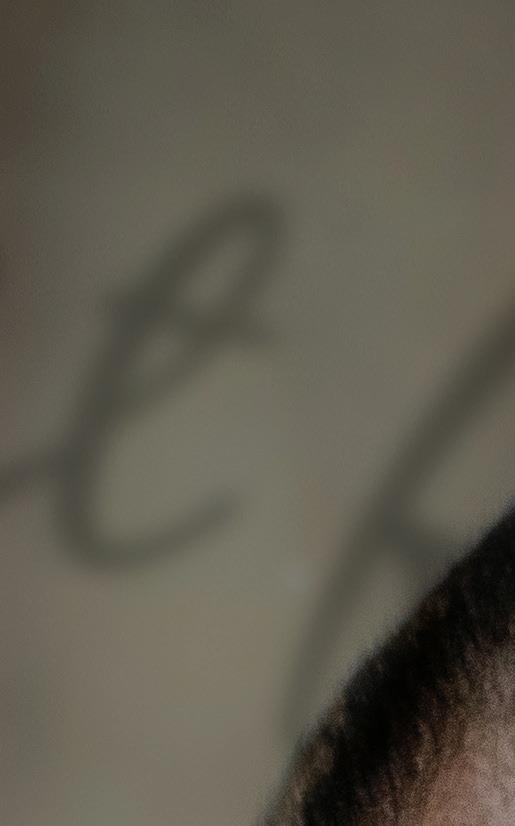
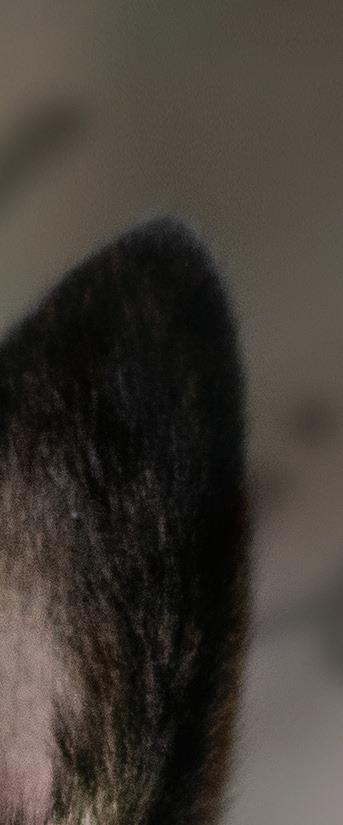


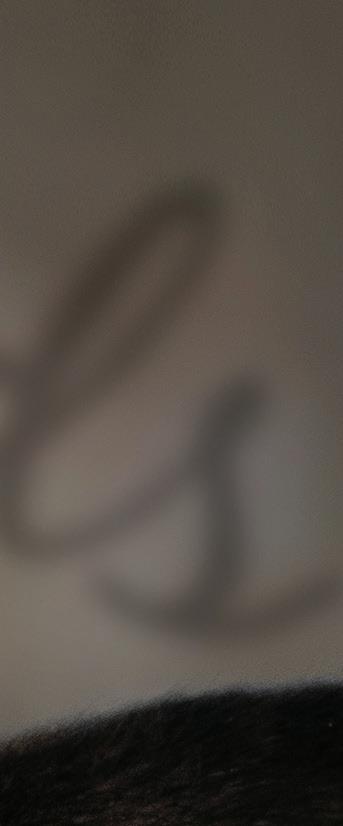



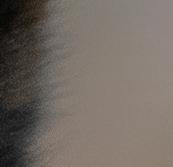
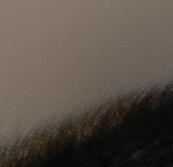




Plus Take a peek inside our new facilities Learn how pets are accelerating the disease 20 9
SPRING / SUMMER 2023 FREE COPY pettrust.ca Bennett’s Story One dog’s journey from a scary hit-and-run accident to a healthy recovery
THE PET MAGAZINE OF THE ONTARIO VETERINARY COLLEGE
With more Canadian pet owners seeking advanced treatment options for their animals, I am pleased to report that a multimillion-dollar capital project to improve the Ontario Veterinary College’s critical care and specialty services is complete and now fully functional –thanks to our incredible OVC Pet Trust supporters.
The new clinical facilities – which include a new intensive care unit and spaces for our neurology and ophthalmology teams – provide optimal educational opportunities and learning outcomes for our students and our trainees, while ensuring companion animals can access the very best medical care available in the world.
The veterinary industry has been under increasing pressure for several years. With aging demographics, veterinary schools are not able to train new veterinarians quickly enough to replace those who are retiring from the profession. The COVID-19 pandemic has further compounded this issue. A sharp increase in pet ownership since 2020 has led to a significant workforce shortage, where veterinarians are carrying increasingly heavy workloads and facing higher expectations from their clients, especially as veterinary teams adapt to new care models and an increase in telemedicine services.
As the Dean of one of the top-ranked veterinary schools in the world, one question that remains top of mind for me daily is: how can we look for new and creative ways to tackle the challenges facing the veterinary industry from a training perspective?
One of the immediate steps OVC can take to address the complex and evolving challenges in veterinary medicine is to expand our Doctor of Veterinary Medicine (DVM) class size. This is something we’ve been working to achieve with our government partners for many years, and we are finally in a position to start to train more new veterinarians each year. Not only will this help us take meaningful steps to address capacity gaps within the profession, but enhancements to our curriculum will also ensure we are better preparing new veterinarians for the industry’s current realities, including the need for better access to care among historically underserved communities.
So, what does the future of veterinary medicine look like? I believe that finding new and better ways to tackle society’s most pressing issues is a core driver of innovation. From the launch of our new Bench to Bedside Institute to the world of artificial intelligence, I hope you enjoy reading the stories in this issue of Best Friends and learning about the ways our teams are fuelling true innovation. Thank you for your ongoing and dedicated support.
Dr. Jeff Wichtel Dean and Professor Ontario Veterinary College University of Guelph
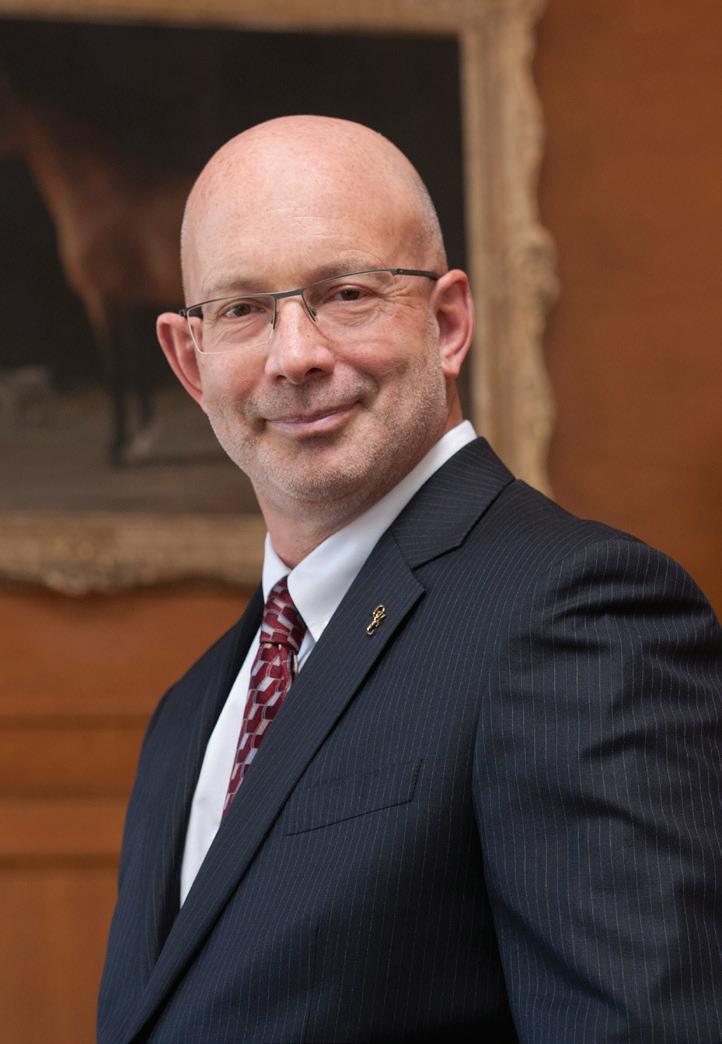
As part of the Ontario Veterinary College (OVC) at the University of Guelph, OVC Pet Trust is Canada’s first charitable fund dedicated to advancing pet health and well-being. We do this by raising funds to support innovative discoveries, healthcare and education that improves the prevention, diagnosis and treatment of diseases of companion animals. Since 1986, more than $73.5 million has been raised to improve life for pets and the people who love them. As of 2023, OVC is ranked first in Canada, third in North America and 6th worldwide for veterinary science by the Quacquarelli Symonds’ World University Rankings
BEST FRIENDS
Published twice per year by OVC Pet Trust.
EDITORIAL TEAM
Ashleigh Martyn
Katherine Galley
Kim Robinson
CONTRIBUTORS
Anya Barradas
Suzi Beber
Katie Duncan
Caitlin Ford
Rishta Jahan
Karen Mantel
Katherine Perry
GRAPHIC DESIGNER
Allison Graef
OVC PET TRUST BOARD
Mary Beaton, Colin Campbell, Dr. Doreen Houston, Dr. Karyn Jones, Kim Lang, Dr. Jennifer Ogeer (Chair), William Pringle, Dr. Rebecca Sterns, Roland Browning Watt, Dr. Jeff Wichtel
Honorary: Roger Warren. Ex-officio: Dr. Luis Gaitero, Kim Robinson, Dr. Shayan Sharif
CONTACT
OVC PET TRUST Ontario Veterinary College University of Guelph 50 Stone Road Guelph ON N1G 2W1
T. 519-824-4120 x 54695 E. ovcpet@uoguelph.ca
GIVE TO OVC PET TRUST pettrust.ca/donate
pettrust.ca
Connect with OVC Pet Trust on Instagram @OVCPetTrust
2
TO LEARN MORE OR TO DONATE VISIT PETTRUST.CA
ABOUT OVC PET TRUST
SHOWCASING OVC’S NEW CLINICAL FACILITIES
BENNETT’S STORY
FROM THE DEAN OF THE ONTARIO VETERINARY COLLEGE
FROM THE DESK OF OUR DIRECTOR
OVC MEWS: UPDATES FROM THE ONTARIO VETERINARY COLLEGE

THE FUTURE OF INNOVATION: COMPANION ANIMALS ARE AT THE FOREFRONT OF ACCELERATING THE DISEASE THERAPY PIPELINE
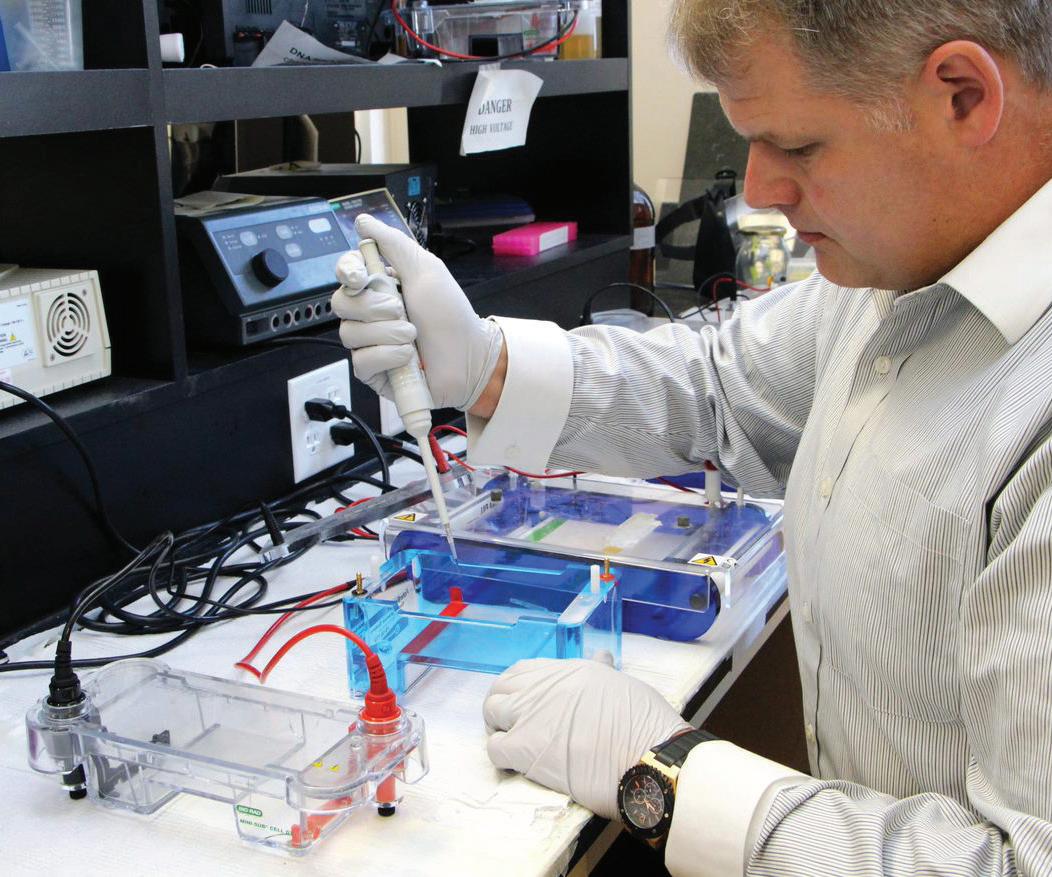
BENNETT’S STORY: ONE DOG’S JOURNEY FROM A SCARY HIT-AND-RUN ACCIDENT TO A HEALTHY RECOVERY

BREAKING DOWN CANCERS TO THEIR BASIC BUILDING BLOCKS: OVC RESEARCH TEAM DISCOVERS STRIKING SIMILARITIES BETWEEN TWO DIFFERENT TYPES OF CANCERS AFFECTING DOGS, CATS AND PEOPLE
ON THE FOREFRONT OF VETERINARY MEDICINE: HARNESSING THE POWER OF ARTIFICIAL INTELLIGENCE IN VETERINARY MEDICINE
YOUR GIFTS AT WORK
GETTING TO KNOW... DR. SHANE BATEMAN
SHOWCASING OVC’S NEW CLINICAL FACILITIES: $8.36 MILLION OVC PET TRUST CAPITAL CAMPAIGN CREATES NEW INTENSIVE CARE UNIT AND EXPANDS
SPECIALTY SERVICES AREAS AT OVC HEALTH SCIENCES CENTRE
SIX DEGREES OF SEPARATION
PETS IN MEMORY: MIMI
3
4
2 12 18
6
THE FUTURE OF INNOVATION
BEST FRIENDS: THE PET MAGAZINE OF THE ONTARIO VETERINARY COLLEGE
9 6
9 20
IN THIS ISSUE:
TRUST PALS
/ SUMMER 2023 5
22
BACK COVER PET
SPRING
20
23 4 14 16
On cover: OVC surgery patient Bennett. Photo credit: Katie Duncan.
OVC MEWS
FROM THE DESK OF OUR DIRECTOR
I am constantly in awe of the generosity of OVC Pet Trust supporters. In the face of many challenges throughout the past few years—including a global pandemic—our incredible community of donors came together and enabled us to do something amazing: to raise $8.36 million to expand our clinical facilities to help the thousands of companion animals OVC treats each year who require advanced, critical and specialty care. The new spaces, which opened in January 2023, include a brand-new Intensive Care Unit (ICU) and two new specialty service suites, which are now home to the OVC Neurology and Ophthalmology teams. One of the supporters who helped make this new infrastructure a reality is the late Dr. Catherine Bergeron— a professor emerita of neuropathology at the University of Toronto and former division chief and staff neuropathologist at Toronto General Hospital—who left an astounding gift of more than $4 million to OVC Pet Trust. A dedicated supporter of OVC Pet Trust during her life, Catherine left an extraordinary legacy to help animals through her estate. In recognition of her deep love of animals, the Catherine Bergeron Centre for Urgent and Critical Care—the heart of our new ICU—has been built and named in her honour. Catherine was a remarkable person, and her generosity will live on for generations to come.
The new and improved spaces will bring so many benefits for our patients, their families and our veterinary teams, and will also allow OVC to keep pace with the modernization of health care. This new infrastructure will enhance optimal caregiving by adapting to changing patient needs and caseloads. Because the OVC Health Sciences Centre is a teaching hospital, these new facilities will also provide more physical space to help educate our students and trainees and inspire the next generation of veterinarians and veterinary specialists. One example of the improved and intentional design elements incorporated throughout the space is zoned lighting for a more restful patient experience that is less disruptive to animals’ circadian rhythms, thus minimizing stress and optimizing conditions for healing. There is an area dedicated purely to veterinary emergency services and triage, which previously coexisted within the ICU itself. The increased space also allows for more privacy for families to visit companions in critical condition who cannot be moved for end-of-life care.
Our vision has been brought to life thanks to our dedicated community of pet owners and animal lovers. Be sure to check out a behind-the-scenes photo gallery of our new facilities—and some of the first patients who have been treated in them—on pages 20-21.
 Kim Robinson Director, OVC Pet Trust Ontario Veterinary College University of Guelph
Kim Robinson Director, OVC Pet Trust Ontario Veterinary College University of Guelph
MULTIMILLION-DOLLAR EXPANSION PROJECT MEANS BETTER ACCESS TO URGENT AND ADVANCED CARE FOR PETS
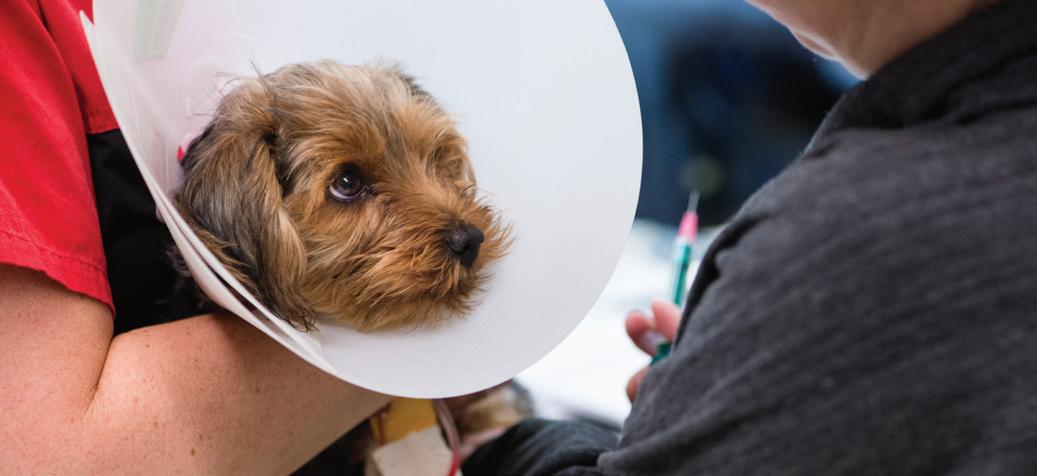
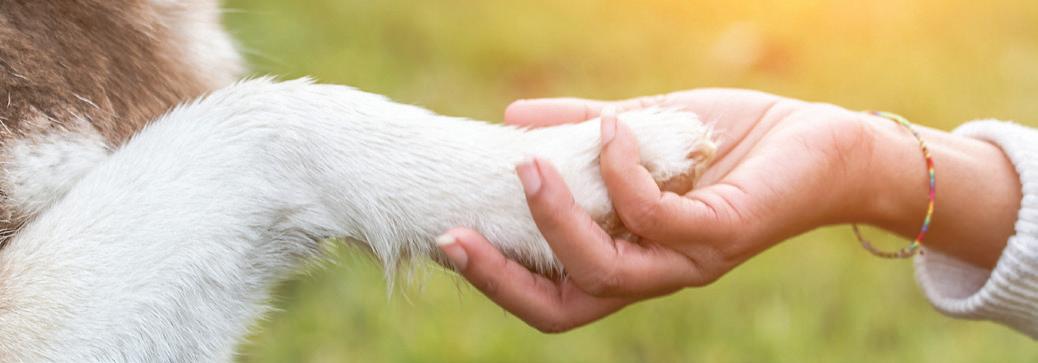
In early 2023, the OVC Health Science Centre (HSC) opened new leading-edge facilities as part of an $8.36 million capital expansion project funded by OVC Pet Trust supporters. New clinical spaces include two specialty suites for OVC Ophthalmology and Neurology clinical services. These suites will provide space for veterinary specialists to assess, diagnose and treat patients, and for OVC students and trainees to gain experience in these specialty areas. The project also funded renovations in the HSC’s intensive care unit (ICU) – home to the Emergency and Critical Care team – and includes a dedicated space for veterinary emergency services; an expanded ICU by more than 2,200 square feet; flexible spaces to adapt to patient care needs; and leading-edge design elements including zoned lighting for better patient rest. With thousands of pets visiting the HSC each year and as a teaching hospital, this expansion project allows for the continued best possible complex and critical care for every OVC patient and optimal learning opportunities for students. Look inside the new facilities on pages 20-21.
NEW BENCH TO BEDSIDE INSTITUTE AIMS TO SPEED UP THE DEVELOPMENT OF DISEASE TREATMENTS THAT BENEFIT BOTH ANIMALS AND HUMANS
Our pets share our homes, are exposed to the same environmental toxins and fall ill to many of the same diseases as humans. One in four dogs will be diagnosed with cancer within their lifetime, compared to one in five humans. Cancers, heart disease, joint pain and neurological disorders are some of the types of diseases that we have in common with our four-legged companions. A new institute at the University of Guelph (U of G) is leveraging these similarities to accelerate the development of therapies from initial scientific discovery to clinical practice. Believed to be the first of its kind in Canada, the Bench to Bedside Institute for Translational Health Research and Innovation, headquartered at U of G’s Ontario Veterinary College, will bring together human and veterinary researchers and clinicians across U of G and other institutions around the world to develop therapies that will benefit humans and animals alike, with the goal to accelerate innovation.
and her dog Juno 4
In photo: Kim Robinson
UPDATES FROM THE ONTARIO VETERINARY COLLEGE
As the top veterinary college in Canada, OVC is home to the OVC Health Sciences Centre (HSC), state-of-the-art clinical facilities that include the OVC Companion Animal Hospital, the OVC Large Animal Hospital and the OVC Hill’s Pet Nutrition Primary Health Care Centre (PHC), where thousands of companion animals and large animals are treated each year. A teaching hospital, the HSC provides student veterinarians and trainees valuable hands-on practice with complex, advanced and routine cases. Much of OVC’s veterinary program success comes from the strong faculty mentorship that student veterinarians, residents and interns receive with their training. Contributing to this mentorship, the new Associate Dean, Clinical Program, Dr. Luis Gaitero, (pictured above), brings nearly two decades of experience in veterinary teaching. Gaitero, a board-certified veterinary neurologist, was appointed to the position in October 2022. Gaitero is responsible for ensuring the success of the HSC to advance clinical research; provide service to the community; and uphold the high standards of the clinical program, ensuring that OVC graduates are prepared to provide top-notch care for their patients.
Dr. Jennifer Ogeer (pictured above with her late dog Paco) has been appointed the chair of the OVC Pet Trust board. Ogeer joined the OVC Pet Trust board in November 2016. She graduated from the Doctor of Veterinary Medicine program at OVC in 1995 and has spent her career in clinical practice, academic teaching, research, administration and the corporate sector. Ogeer holds an Executive MBA, an MA (Leadership) and a Master of Science in critical care medicine, which was supported by OVC Pet Trust and originally inspired her to participate in the altruistic work of the board. Ogeer is an advocate for animal welfare, the human-animal bond and diversity, equity, inclusion and belonging in veterinary medicine. She is currently vice president of medical science and innovation at Antech Diagnostics and shares her home with a puppy named Rocky and four cats, all of which are rescues.
Outgoing chair Dr. Doreen Houston (pictured below with her dog Obi), who joined the board in March 2013, was appointed as chair in February 2017. Dr. Houston was thanked as she stepped down in February 2023. “We express our deep gratitude for everything Doreen has done for OVC Pet Trust,” says associate dean of research and graduate studies, Dr. Shayan Sharif. “She’s been a champion of OVC and Pet Trust for years and directed a board of diverse backgrounds skillfully and effectively, steering the ship through the pandemic, allocating
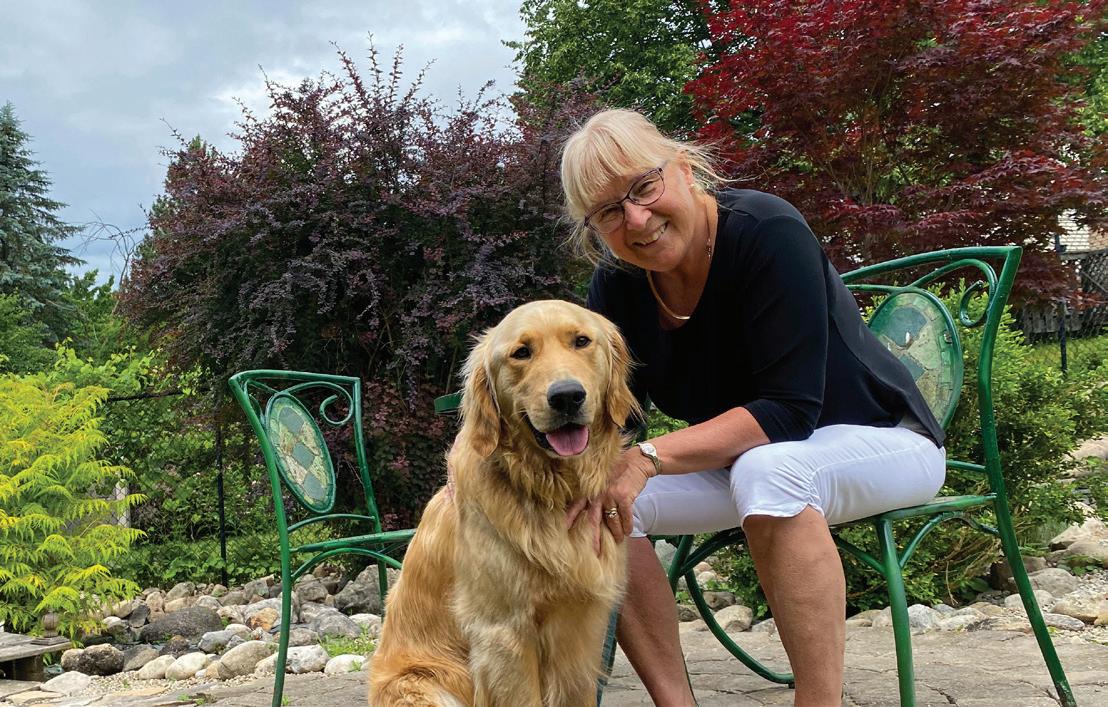
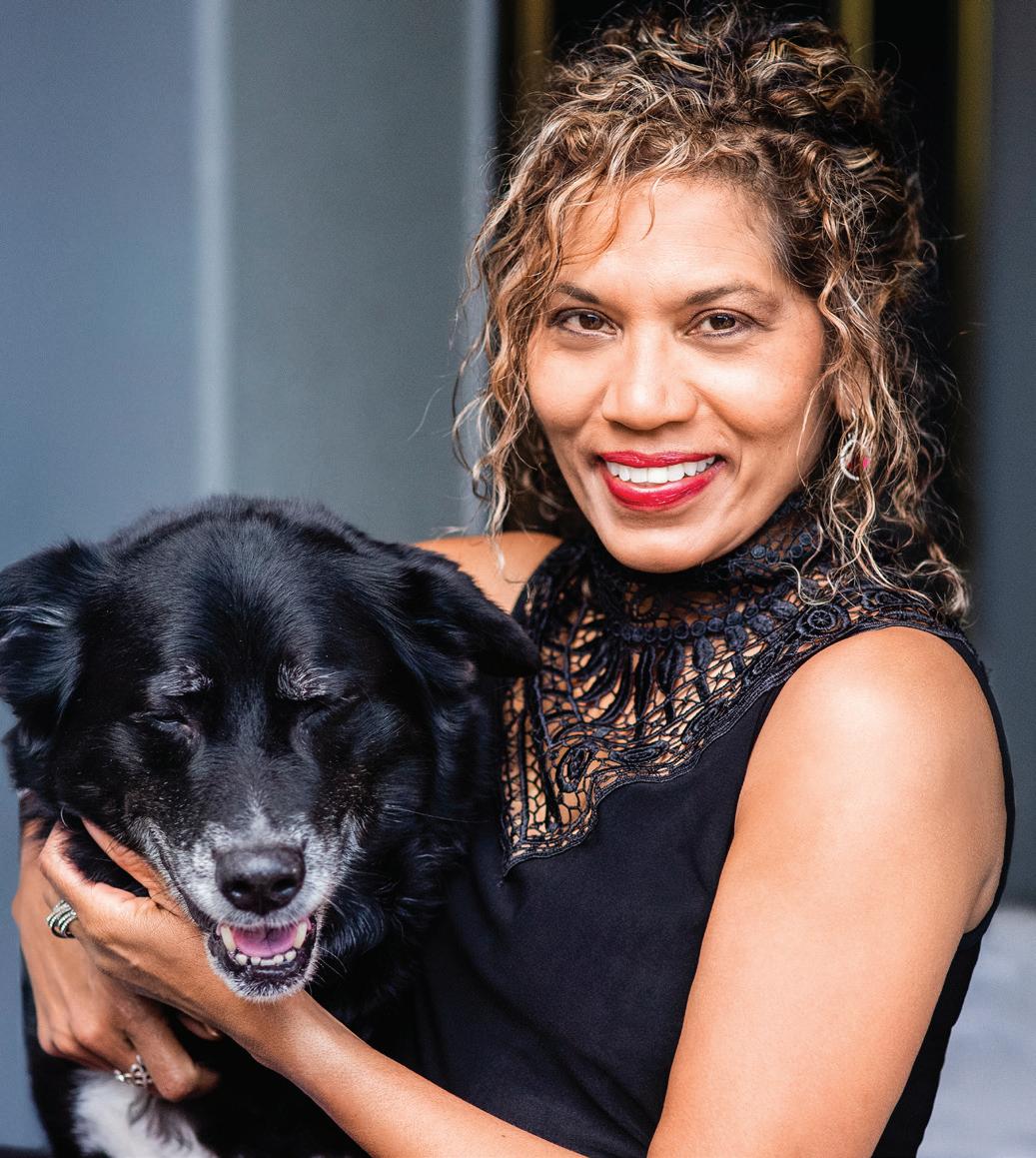
OVC PLACES FIRST IN CANADA, SIXTH WORLDWIDE FOR VETERINARY SCIENCE IN NEW 2023 WORLD UNIVERSITY RANKINGS

The Ontario Veterinary College (OVC) has placed sixth in the world and first in Canada based on new 2023 rankings by Quacquarelli Symonds (QS), the world’s largest provider of services, analytics and insight to the global higher education sector. Performance is based on academic reputation, employer reputation and research impact. OVC has consistently placed in the top 10 since QS first included veterinary science in their rankings in 2015.
 OVC APPOINTS NEW ASSOCIATE DEAN TO UPHOLD CLINICAL PROGRAM’S STRONG TEACHING REPUTATION
OVC PET TRUST APPOINTS NEW BOARD CHAIR
OVC APPOINTS NEW ASSOCIATE DEAN TO UPHOLD CLINICAL PROGRAM’S STRONG TEACHING REPUTATION
OVC PET TRUST APPOINTS NEW BOARD CHAIR
The future of innovation


Companion animals are at the forefront of accelerating the disease therapy pipeline
You wouldn’t take your pet to your family doctor, and you wouldn’t go to your pet’s veterinarian to treat what ails you, but you may be surprised to learn that collaborations between researchers in the human and animal health fields have the potential to accelerate the development of various therapies for both humans and the pets we love.
Thanks to improvements in diagnostic imaging, diseases are being identified sooner and more accurately than ever before, but according to experts, human therapies—or treatments for diseases—generally take more than a decade to come to market after they have been tested in the laboratory.
The challenge lies within something that scientists refer to as the translational gap. Therapies that worked in a lab environment typically have a 94 per cent failure rate when applied to human patients. Lab animals, like mice, do not have the same naturally occurring diseases as humans and their genetics are significantly different.
By contrast, humans have a lot in common with the companion animals that we share our homes with.
“We live under the same roof as our pets and get exposed to the same environmental toxins, like pollution and secondhand smoke,” says Ontario Veterinary College (OVC) associate dean, research and graduate studies Dr. Shayan Sharif. “Diseases that affect people—like cancers, heart conditions, joint pain and neurological disorders—have a lot in common with the ailments that affect companion animals. Pets, like people, are genetically diverse, making them near-perfect models for what we call translational research: a growing body of research which examines the overlap between basic science and human and animal health research to accelerate therapy development that could help both species.”
In November 2022, OVC launched a research centre believed to be the first of its kind in Canada: the Bench to Bedside Institute for Translational Health Research and Innovation. The goal of the institute is to become a leader in translational research, uniting researchers and clinicians across the University of Guelph and other institutions around the world to ultimately accelerate innovation.
As a globally ranked veterinary school, OVC helps thousands of companion animals in its state-of-the-art facilities at its on-site Health Sciences Centre, with more than 20,000 patient visits per year.
“We’ve got an incredible opportunity to treat naturally occurring diseases in companion animals while giving pet owners an option to have their pets participate in research that could help develop new therapies sooner,” says Dr. Jim Petrik, co-director of the Bench to Bedside Institute and professor at OVC.
While future initiatives are underway, translational research at OVC is not new. Here are a few examples of research that has the potential to treat diseases in humans and animals.

6
iStock photo credit: Olena Lishchyshyna
Improving the Delivery of Cancer Therapies

In cancer patients, a tumour’s own blood supply allows the disease to progress and spread throughout the body. However, with remodeling, it can be used as a vehicle for cancer therapies.
Dr. Jim Petrik, professor in the OVC’s Department of Biomedical Sciences, developed a novel biological compound that significantly improves the effectiveness of cancer therapies.
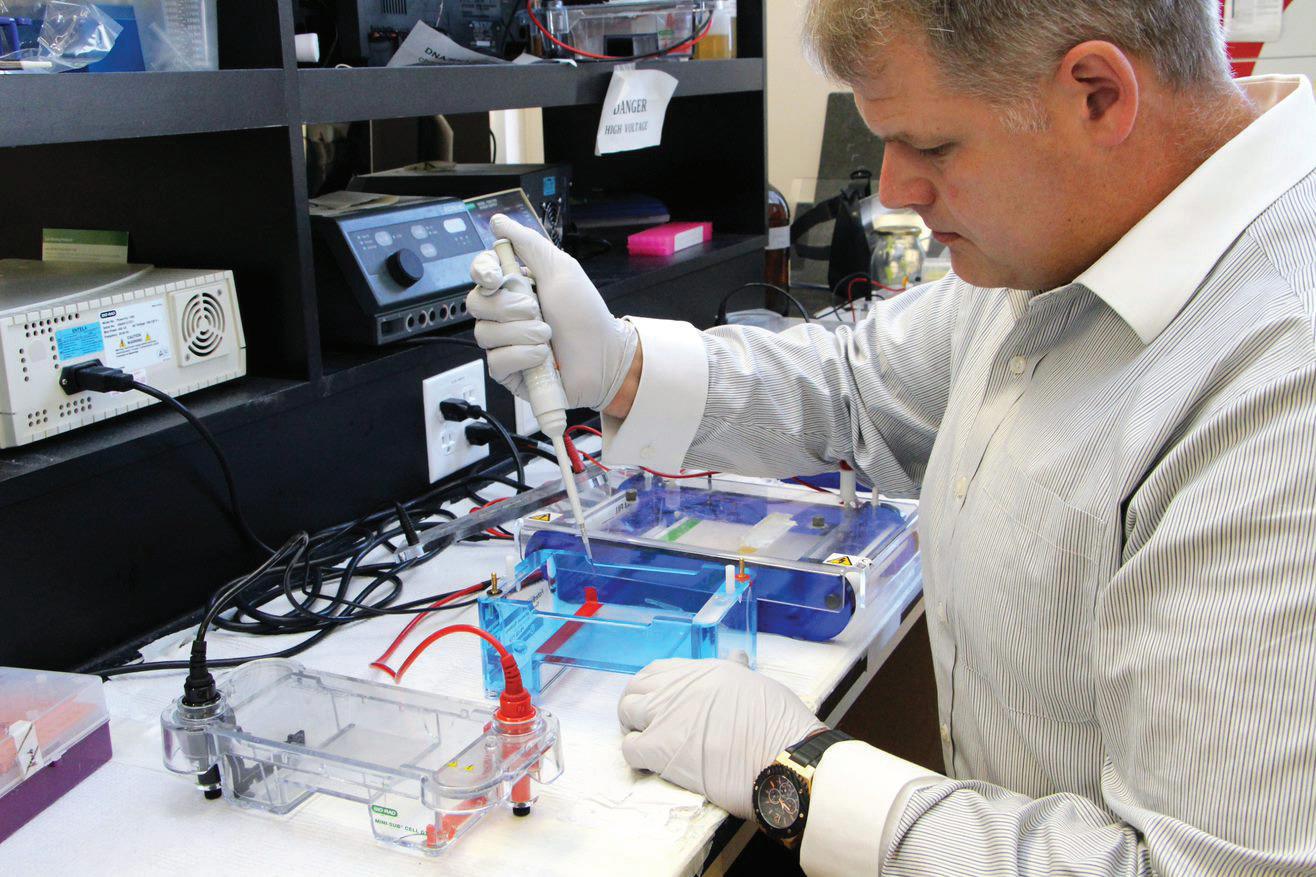
The compound is used to remodel tangled tumour blood vessels, pruning them back and re-establishing a healthy blood supply to the tumour. While the process may sound counterintuitive, it creates an unobstructed pathway for the body’s naturally occurring cancer-fighting immune cells.


Applying Petrik’s method in preclinical models resulted in an unprecedented uptake of cancer therapies (like chemotherapy and immunotherapy) in late-stage ovarian cancer tumours—sometimes by as much as 500 per cent, resulting in complete eradication of the disease in the lab.
The next step is to explore the use and efficacy of the cancer-fighting compound in a clinical trial at the OVC Health Sciences Centre within the next year. The trial will aim to recruit eligible dog patients whose families consent to participation and who have been diagnosed with hemangiosarcoma, a cancer in the lining of the blood vessels that is known to be aggressive and has a high rate of metastasis or spread. Human clinical trials are also planned to take place in various cancer centres across Ontario, which Petrik hopes will begin in 2023 or 2024.
Putting a Glow-In-The-Dark Target on Lung Cancer
According to the Canadian Cancer Society, cigarette smoke and pollution are the leading causes of lung cancer, which is one of the most diagnosed cancers in humans and has increasingly been diagnosed in dogs in recent years. In fact, canine lung cancer has a lot of biological similarities with human lung cancer in non-smokers.

Surgical oncologist and co-director of the Bench to Bedside Institute
Dr. Michelle Oblak is exploring the use of a medical grade glow-inthe-dark dye to enhance imaging and improve the accuracy of lung cancer surgeries in both dogs and humans.

During cancer surgery, the extent of the cancer may not always be obvious and that can result in not enough or too much tissue being removed, and too many or too few lymph nodes being removed, creating a need for an additional surgery or delaying patient recovery. Oblak is researching how indocyanine green (ICG)—a non-toxic glow-in-the-dark dye—reacts with lung cancer cell receptors, which are proteins on the cell surface that are unique for each type of cancer.
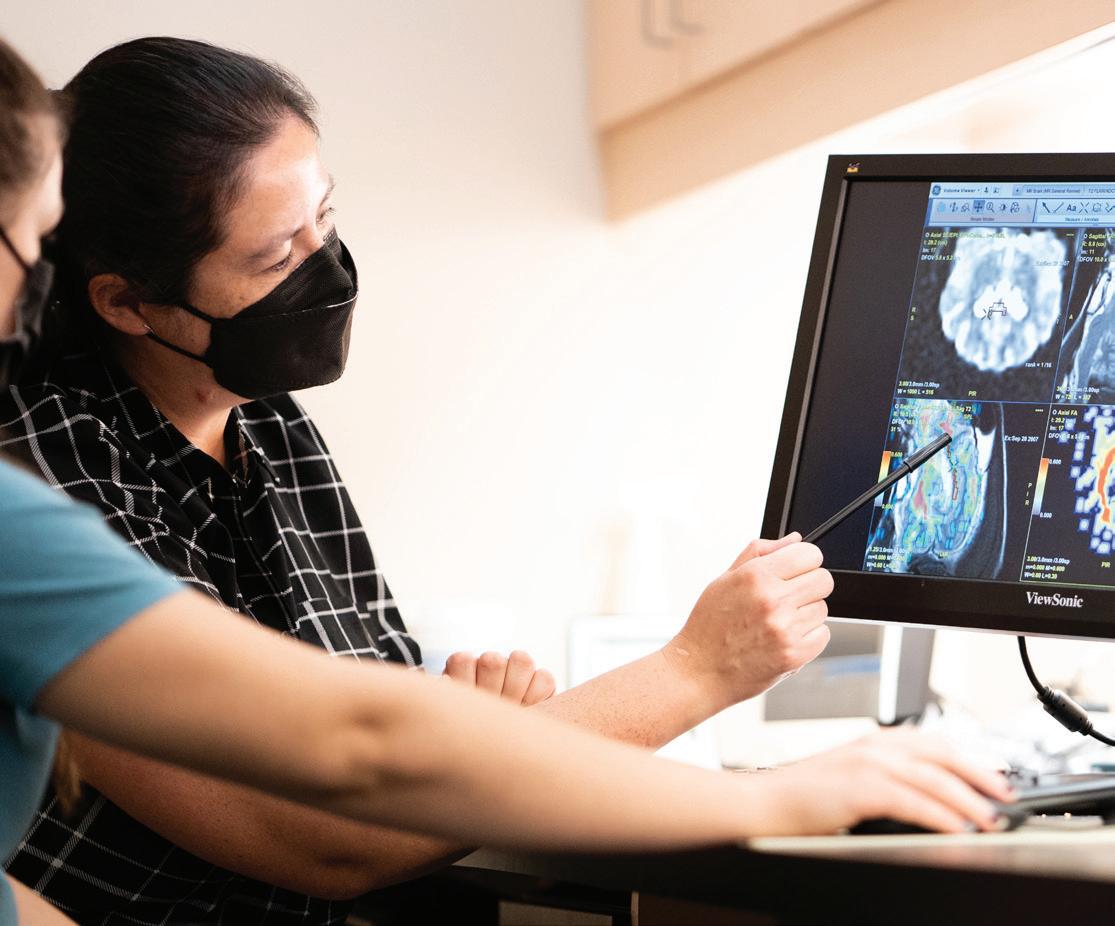
While Oblak is not the first to use a glow-in-the-dark dye to guide cancer surgery, adapting the method specifically for lung cancer will be a welcome advancement in both human and veterinary medicine.

An Activity Tracker for Dogs with Epilepsy
New research from Dr. Fiona James’ Comparative Epilepsy Lab at OVC is exploring the use of wearable technology called actigraphy (like FitBits) for dogs and their caregivers to determine whether there are behavioural or environmental changes that occur when dogs have a seizure. Better understanding of canine behaviour is a crucial step in predicting seizures and helping caregivers of epileptic dogs manage the disease.
In James’ study, wearable technology is paired with electroencephalography (EEG), the gold standard for epilepsy diagnosis in both humans and animals. With electrodes carefully attached to her canine patient’s scalp, James fits them with a specially designed backpack, an element she adapted from her pediatric counterparts at The Hospital for Sick Children (SickKids) that holds a wireless transmitter to capture data.
7
Dr. Jim Petrik
Dr. Michelle Oblak
Dr. Fiona James
Considering the variability of the dogs’ head shape and size, pinpointing the origin of the seizure in the dog’s brain is challenging, but successful brain mapping could open the door for surgery down the road, which in some cases is already curative for people who suffer from the condition.
James hopes to strengthen the two-way information exchange between human and canine researchers studying epilepsy to better diagnose and treat the condition in both species. James’ study is funded by OVC Pet Trust and is believed to be the first of its kind in the world to combine EEG and actigraphy for use on canine patients.
Like humans, animals suffer from degenerative diseases such as osteoarthritis and elbow dysplasia with limited treatment options.
Improving Cross-Species Joint Health Using Stem Cells

Thomas Koch, who has dedicated his career to studying regenerative medicine, focuses his research on the use of stem cells to repair damaged joints. Unlike other cells in the body that have a specific purpose, stem cells are unspecialized. As such, they can be transformed into cartilage or other specialized cells that can act as an internal repair system or treatment for damage within the body.
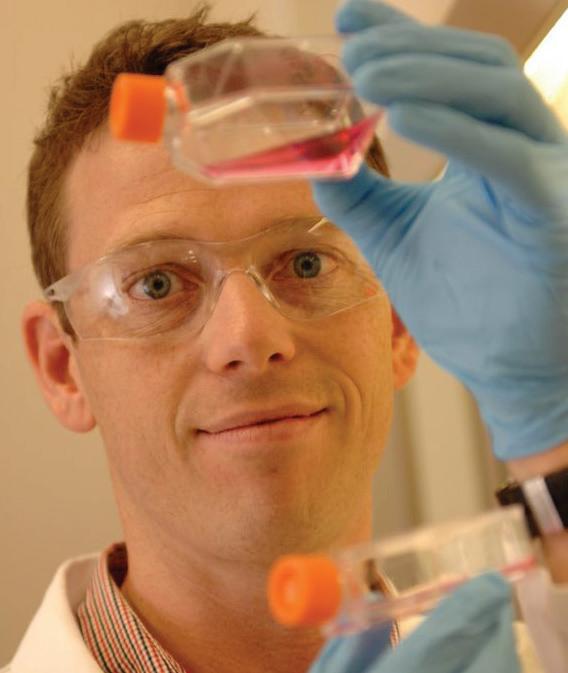
While joint ailments were originally associated with wear and aging, they are now understood to be a result of the body’s failed attempt to repair damaged joint tissues when otherwise healthy tissue has been impacted by injury, extended heavy workloads or obesity.
Together with clinical researchers, Koch is using cell tissues engineered in his lab to treat osteoarthritis in horses and elbow dysplasia in dogs. Both diseases parallel similar human ailments and future discoveries could potentially be used to help people and animals alike.
Fighting Cancer with Ultrasound

Dr. Brigitte Brisson’s area of expertise is minimally invasive surgery and interventional procedures, but in her current collaboration with researchers from The Hospital for Sick Children (SickKids), she is foregoing traditional surgery altogether. Brisson is currently trialing a non-invasive treatment for osteosarcoma, a type of bone cancer that is genetically similar in dogs and humans.
The technology Brisson is using is called High-Intensity Focused Ultrasound, also known more simply as HIFU. Much like a magnifying glass used to focus sunlight, HIFU is used to focus heat to destroy specific cancer cells in the body. The results are instant, and because the beams pass through the healthy tissue without causing harm, recovery time is typically minimal.




For both human and veterinary patients diagnosed with bone cancers, HIFU aims to offer a less invasive treatment option for palliation of pain and tumour destruction (ablation).
Brisson is the first researcher to trial HIFU on canine osteosarcoma patients in Canada and the first to trial it as a palliative option for dog patients that are not otherwise candidates for amputation, the current recommended treatment.

8
Dr.
Dr. Thomas Koch
Dr. Brigitte Brisson
Bennett’s Story
One dog’s journey from a scary hit-and-run accident to a healthy recovery
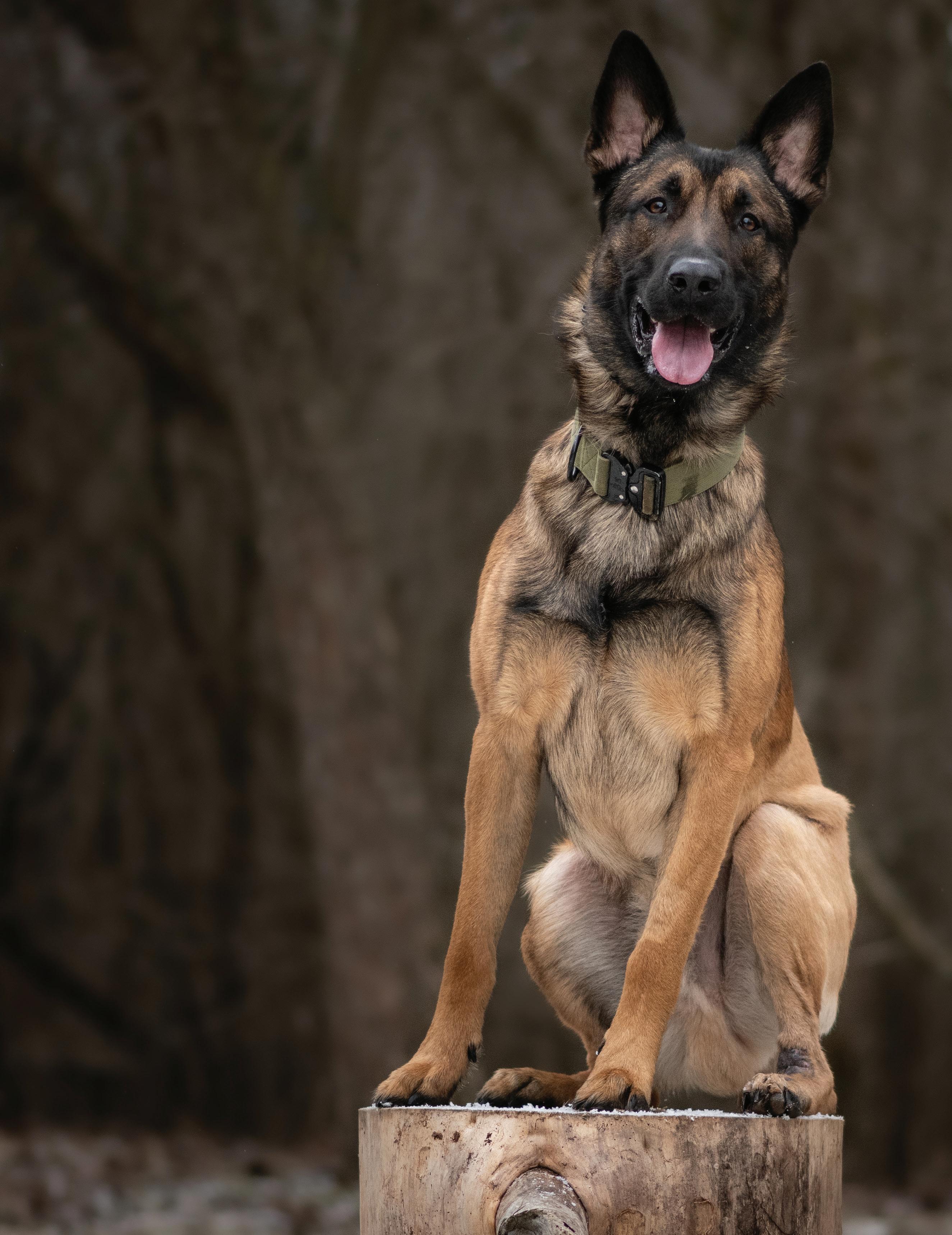
9
In photo: OVC patient Bennett.
Photo credit: Katie Duncan
“He’s a lover, not a fighter, and he’s very calm for his breed, which is usually super high energy,” says Kristen.

Kristen views Bennett as her child; she always keeps a close eye on him, and he rarely wanders away. But one afternoon in September 2022, when Kristen—who is training to be a paramedic—was at work, Bennett made his way to the road where he was presumed to have been hit by a vehicle that fled the scene.
Kristen’s dad was home at the time and saw that Bennett’s hind leg was seriously injured, so he quickly bandaged the wound and brought him to a nearby veterinary clinic.
“I was receiving non-stop calls from my dad towards the end of my shift, so I texted him to find out what was going on,” Kristen says. “When he told me that Bennett had been hurt, I had a huge sinking feeling in my chest.”
Kristen was told that he had suffered a degloving injury, which involves damage to the outer layers of skin, exposing the muscle and bone. The veterinary team at Watzin Veterinary Clinic in Waterdown assessed the injury and provided antibiotics and initial wound care, but
the veterinarian told Kristen that he would ultimately need help beyond what their clinic was equipped to provide. Bennett was referred to the Ontario Veterinary College (OVC) for advanced care and surgical wound management.
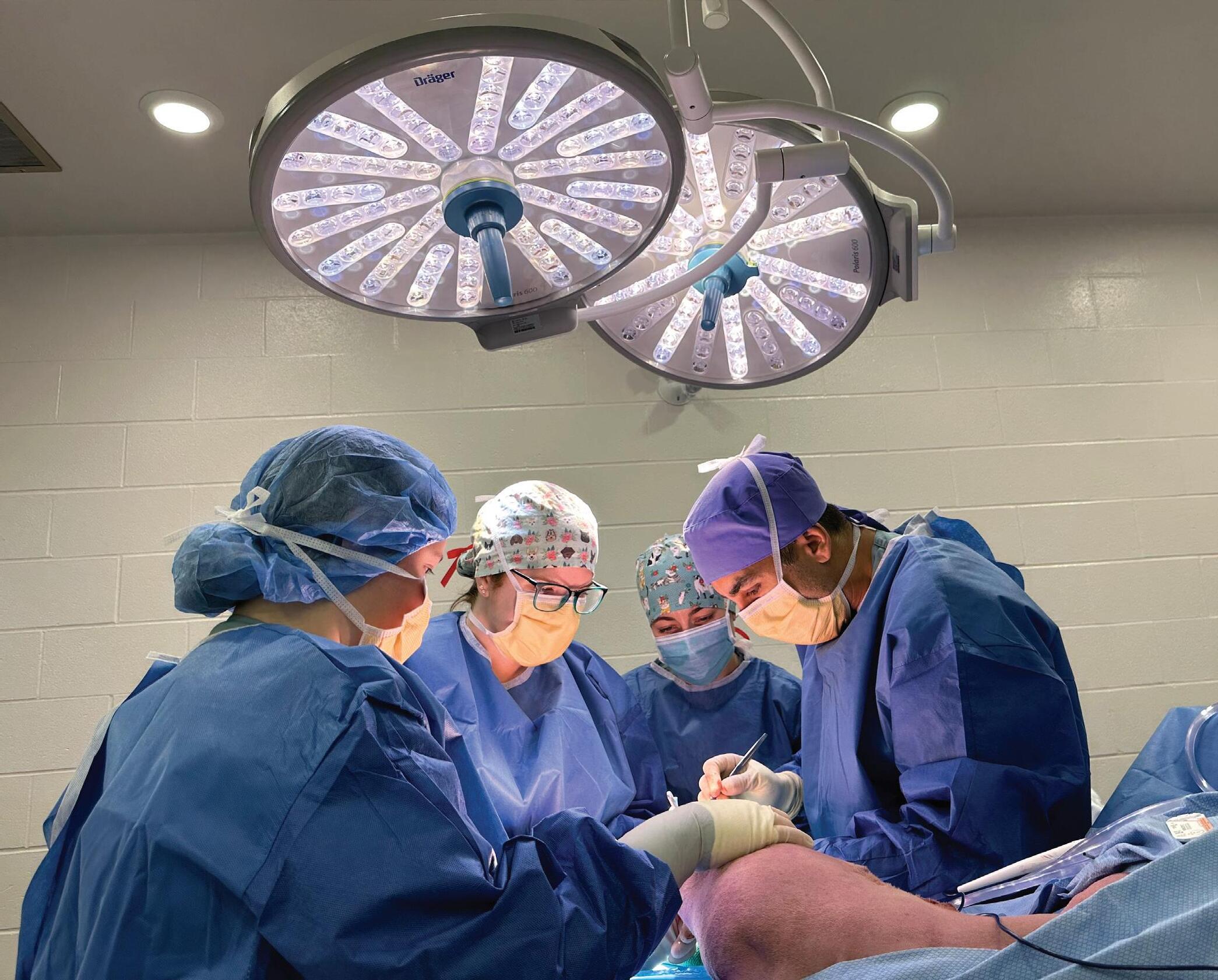
“The veterinarian at Watzin told me how extensive Bennett’s injuries were,” Kristen remembers. “The OVC came highly recommended to us. I knew that the OVC had a great reputation, so we packed up the car and brought Bennett to Guelph as soon as possible.”
Bennett was admitted to OVC’s Intensive Care Unit for two nights in September 2022 where he underwent an initial surgical procedure to debride and flush the wounds (which involves cleaning and removing infected tissue to promote healing) and initiate intravenous (IV) antibiotic therapy to treat infection.
Due to the challenging location of Bennett’s wounds, the veterinary surgical team recommended that he receive a meshed free skin graft—a surgical procedure where sections of skin are taken from the side of the body and placed on the wound to help the skin re-grow and speed up the healing process. The degloving injuries Bennett had endured were over muscles used to walk and move around, and can be a difficult area of the body to treat—even when activity is restricted as much as possible.
“I was told that it may take months for the wounds to heal on their own without a graft,” Kristen says. “Skin grafts were presented as the best possible option to help close the wounds sooner, and I trusted the care and expertise of the OVC team.”
Bennett underwent his first surgery on November 3, 2022. He recovered smoothly, and in the months that followed, he returned to OVC on a weekly basis for bandage changes and to monitor his wound. As is often the situation with medically complex cases where
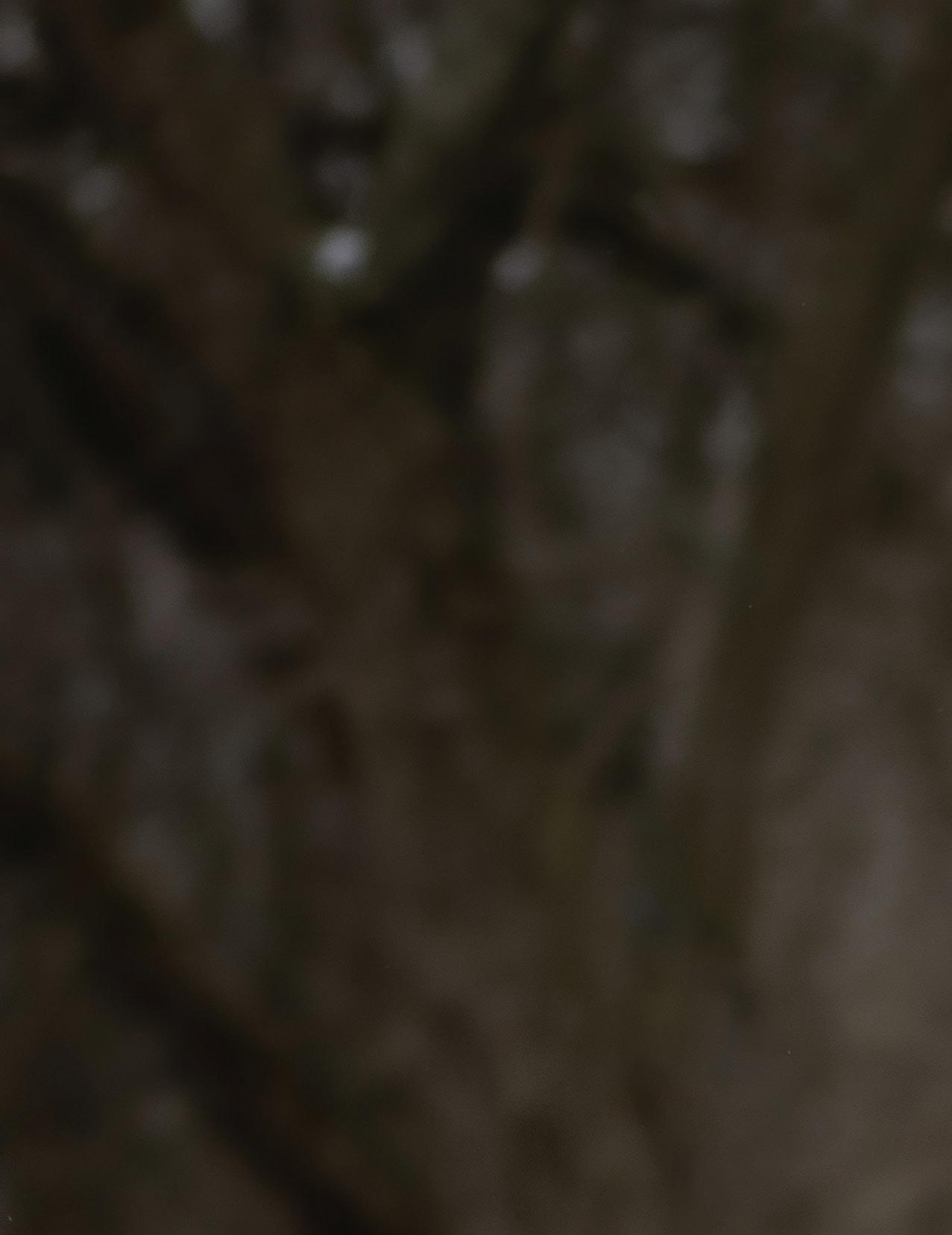
10
Bennett is a one-year-old Belgian Malinois and German Shepherd mix. His calm, independent and gentle personality is what drew Kristen Logan to adopt him as a ten-week-old puppy—and they have been inseparable ever since.
OVC small animal surgeon Dr. Ameet Singh and his team perform Bennett’s skin graft surgery at the OVC Health Sciences Centre. Photo credit: Ashleigh Martyn.
treatments and interventions are ongoing, in January 2023 it was recommended that a second skin graft surgery be performed to further accelerate Bennett’s healing.
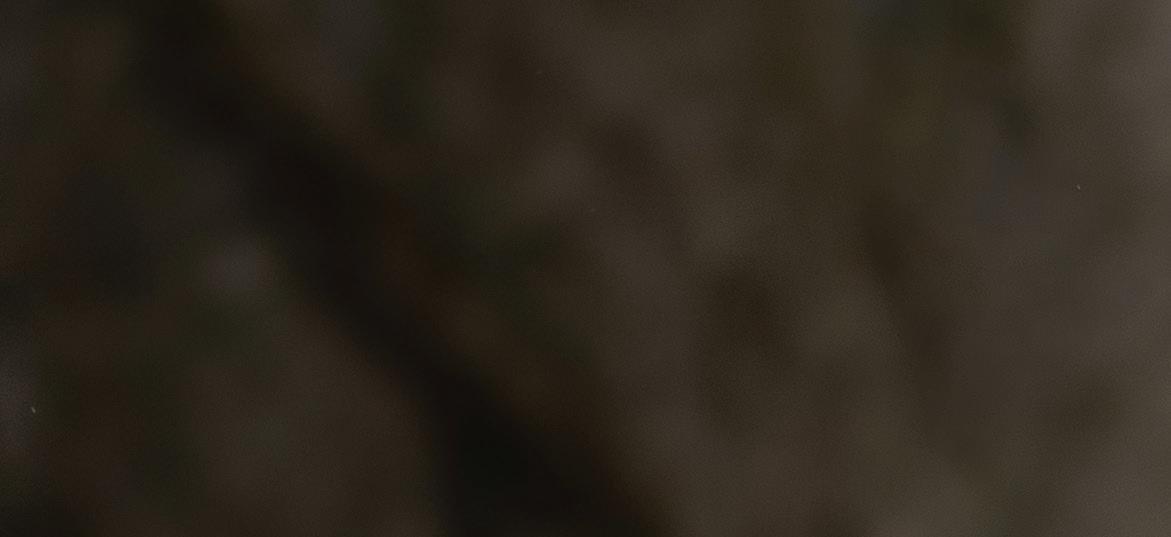
On January 13, board certified small animal surgeon Dr. Ameet Singh and surgery resident Dr. Rebecca Beardall performed a meshed free skin graft on Bennett’s leg at the OVC Companion Animal Hospital.

“Due to the size and location of Bennett’s wound, a free skin graft was definitely the way to go so that skin would cover the wound instead of waiting for the wound to scar over on its own, which would take several months,” Dr. Singh explains. “We took a piece of skin from the side of his body and transplanted it into the wound site. Additionally, we used a vacuum-type bandage device—which is very commonly used in people to aid in wound healing—to help the graft ‘stick down’ and give it the best chance to start its healing process. We left the vacuum bandage in place for four days and we were very happy with Bennett’s progress in healing following that procedure.”
Next, it was a waiting game.
“Bennett was hospitalized at OVC for six days after his surgery, which felt like an eternity,” Kristen says. “The OVC team kept me updated every day by telephone and I was even able to visit him a couple of times in the hospital.”
Since his skin graft surgery in January, Bennett’s wounds have been healing well—and fortunately, the graft was 100 per cent successful.

“He loves to play in the snow, but during his recovery, I kept him on leash whenever he went out for bathroom breaks, and he wears a boot
outside so his wound dressing doesn’t get wet,” Kristen says. “My dad also built him a ramp so he doesn’t need to climb the stairs.”
Kristen’s quick action after Bennett’s injuries and her dedicated care throughout his recovery have helped his wounds heal and he is back to being his regular self. Bennett is an important member of the family and Kristen is grateful for the ongoing care that he has received at OVC. He is now back to doing the things he loves most—like hiking, camping, swimming, and playing with other dogs.
11
“Although Bennett is a dog, he’s my best friend and a great companion,” Kristin says. “I do not know what I would have done without our veterinarian recommending OVC. Without their care, Bennett may not be here with me today.”
Bennett visits OVC for a bandage change (left) and recovers after his surgery (right). Photo credit: Ashleigh Martyn.
BREAKING DOWN CANCERS TO THEIR BASIC BUILDING BLOCKS

OVC research team discovers striking similarities between two different types of cancers affecting dogs, cats and people
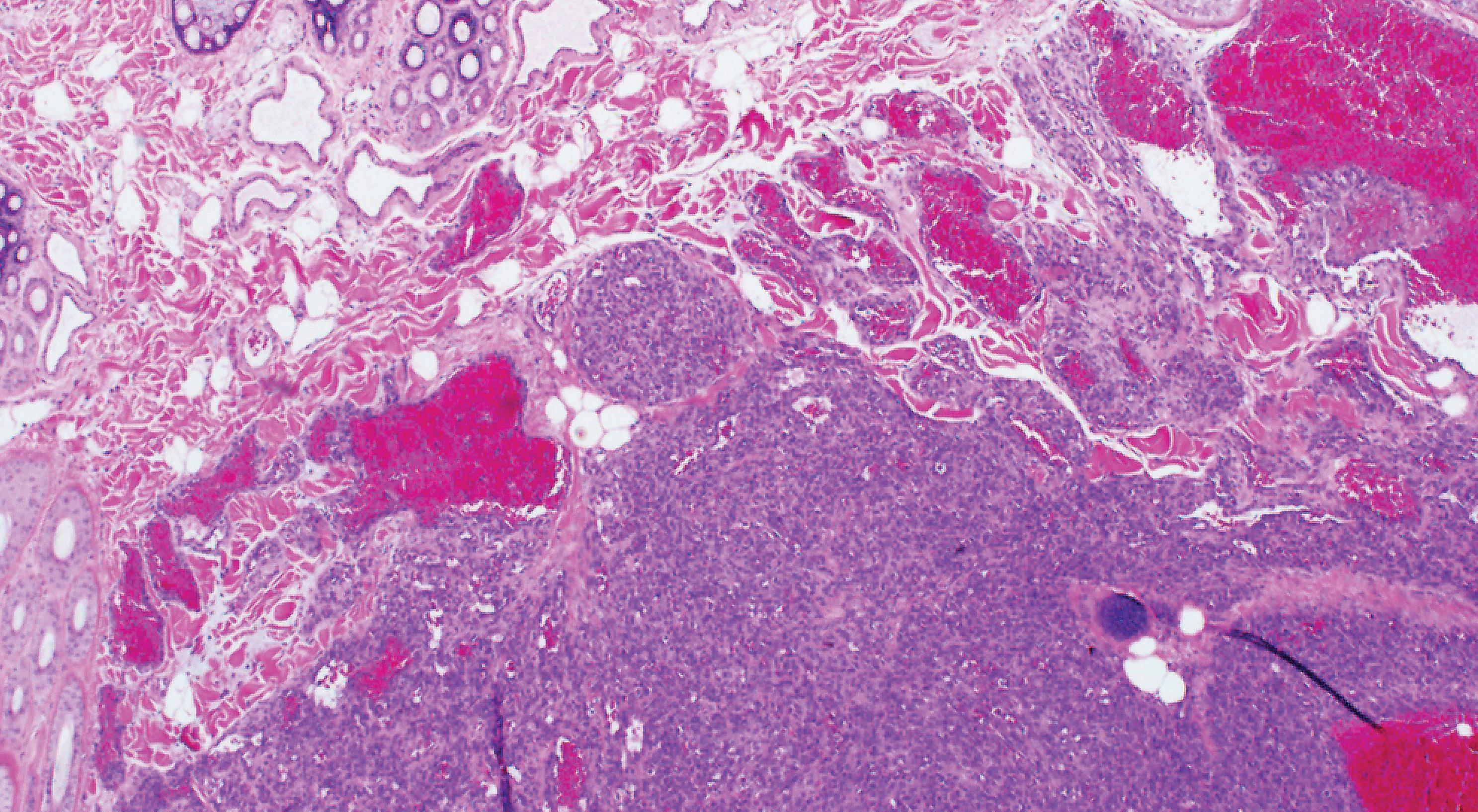
12
In photo: A microscopic image of hemangiosarcoma cells in the skin of a dog patient. Black arrow indicates normal skin with hair follicles in the upper left corner (the bubble-like structures); the black asterisk indicates tumour cells (the blue-purple areas). Some areas in the tumour form channels filled with blood (bright red), marked by two asterisks. Photo credit: Dr. Latasha Ludwig.
Are gene mutations the key to unlocking improved cancer treatments for all species?
Researchers in the field of human and animal cancer genetics are making discoveries by identifying and comparing gene mutations, which are slight alterations in the DNA of cells that can accumulate over time and lead to cancer. One research team at the Ontario Veterinary College (OVC) is exploring similar genetic mutations across various types of human and animal cancers, a fresh and innovative approach to finding better ways to treat disease.
OVC professor, veterinary pathologist and cancer researcher Dr. Geoffrey Wood and Doctor of Veterinary Medicine (DVM) graduate and PhD candidate Dr. Latasha Ludwig recently contributed to a cross-species research initiative that compared genetic mutations in hemangiosarcoma (HSA), a common and aggressive cancer in dogs and cats, with a rare and hard to study form of human cancer called angiosarcoma.
Ludwig recalls emergency HSA cases in patients during one of her clinical rotations as a student veterinarian at the OVC Health Sciences Centre. “It’s a problematic cancer for many different reasons,” shares Ludwig. “It is common for patients to be stable and then suddenly deteriorate and require emergency care due to a massive bleed in the abdomen. Unfortunately, the prognosis is poor, even with surgery and chemotherapy.”
Common in older canine patients but also affecting cats, HSA can arise in the lining of blood vessels within internal organs and less commonly in the skin or underlying tissues in animals. Patients suffering from HSA in the spleen, like the ones Ludwig observed during her clinical rotation, are often hospitalized with a large splenic mass, which eventually ruptures. If HSA is caught early, removing the entire spleen has the best prognosis, but often there are no signs of sickness until the tumour has already grown and ruptured. Even once the spleen is removed, finding HSA cells to reach a diagnosis can be difficult as they are sometimes missed under the microscope, especially if the splenic mass is already enlarged and bleeding.

Samples from the removed spleens, along with blood samples, are routinely collected from patients at the OVC Health Sciences Centre and stored in the OVC Veterinary Biobank (formerly known as Companion Animal Tumour Sample Bank or CATSB) for further research with informed owner consent. The Biobank is supported by OVC Pet Trust and The Smiling Blue Skies Cancer Fund and contains more than 30,000 samples including tissue, serum, white blood cells and urine from more than 1,850 cancer cases.
Together with their collaborators at the Wellcome Sanger Institute in Cambridge, UK—a centre specializing in human cancer genetics—the research team used banked samples to compare against the genetic mutations found in angiosarcoma (AS), an extremely rare type of human cancer. AS develops in the lining of the blood and lymphatic vessels in people and emerges as a tumour, most often on the face and scalp and sometimes on internal organs. Before the study, little was known about the similarities between the two cancers other than both originate in the lining of vessels.
The results of the study found several genes that were consistently mutated in both HSA and AS samples. In addition, a common ultraviolet (UV) mutation signature, which is like a fingerprint on the mutated genes, suggests that sunlight is a trigger for both cancers, if they occur on the skin.
According to Wood, mutation similarities across species in HSA and AS are not exclusive to these cancers. In human medicine, understanding genetic commonalities between different types of cancer has led to further clinical trials to broaden the use of therapies originally developed for a specific type of cancer.
“They are called basket trials,” says Wood. “This means that different types of tumours that have similar mutations can get put in the same ‘basket’ or category and treated with the same drug since it targets that mutation.”
In the case of AS, the rarity of the disease makes it very difficult to run a clinical trial with human patients, but newly discovered genetic similarities between AS and HSA present the possibility of a dual benefit. “Companion animals could potentially benefit directly from a new therapy and at the same time help inform about a rare human disease,” Wood explains. “For example, if a clinical trial in dogs with HSA is targeting a mutation that is common between HSA and AS, the information derived from a canine trial could potentially be applicable to the human version of the disease,” he adds.
In other diseases, where similar mutated genes were present in both human and veterinary cancers, treatments originally developed for human medicine are making their way over for veterinary use. “There are some drugs that work across both species that are targeted towards a certain kind of cancer-associated protein,” says Wood.
Future research from Wood and Ludwig will take a closer look at specific blood particles called miRNA, which are responsible for gene regulation and could serve as an early warning system for identifying HSA.
“Our ultimate goal would be to develop a simple preventive blood test to detect disease early—potentially months or even years before an HSA diagnosis is made and a tumour appears,” says Ludwig. “In the long term, we hope our research helps patients, their veterinary team and their families experience a better quality of life.”
13
HARNESSING THE POWER OF ARTIFICIAL INTELLIGENCE IN VETERINARY MEDICINE


You likely already use artificial intelligence (AI) for everyday tasks. It is used to optimize the spam filter in your email account, help your phone predict text while you type and recommend products when online shopping. But how might AI come into play when you take your pet to the veterinarian? What if AI could give pet owners peace of mind and help predict the course of an animal’s disease?
OVC radiologist and assistant professor Dr. Ryan Appleby believes that AI could be used for so much more than those everyday tasks, specifically in veterinary diagnostic imaging.


AI is already a regular tool in human medicine, and it is now making its way into veterinary medicine. From helping the radiologist or technician position patients for more accurate radiographs, to acting as a second eye for practitioners by identifying abnormalities in radiographs through computer-aided diagnosis—Appleby believes that AI could revolutionize veterinary care as we know it.


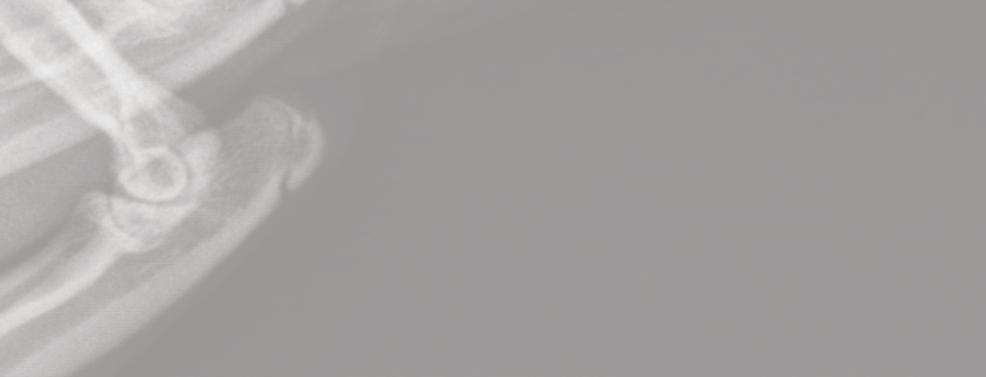

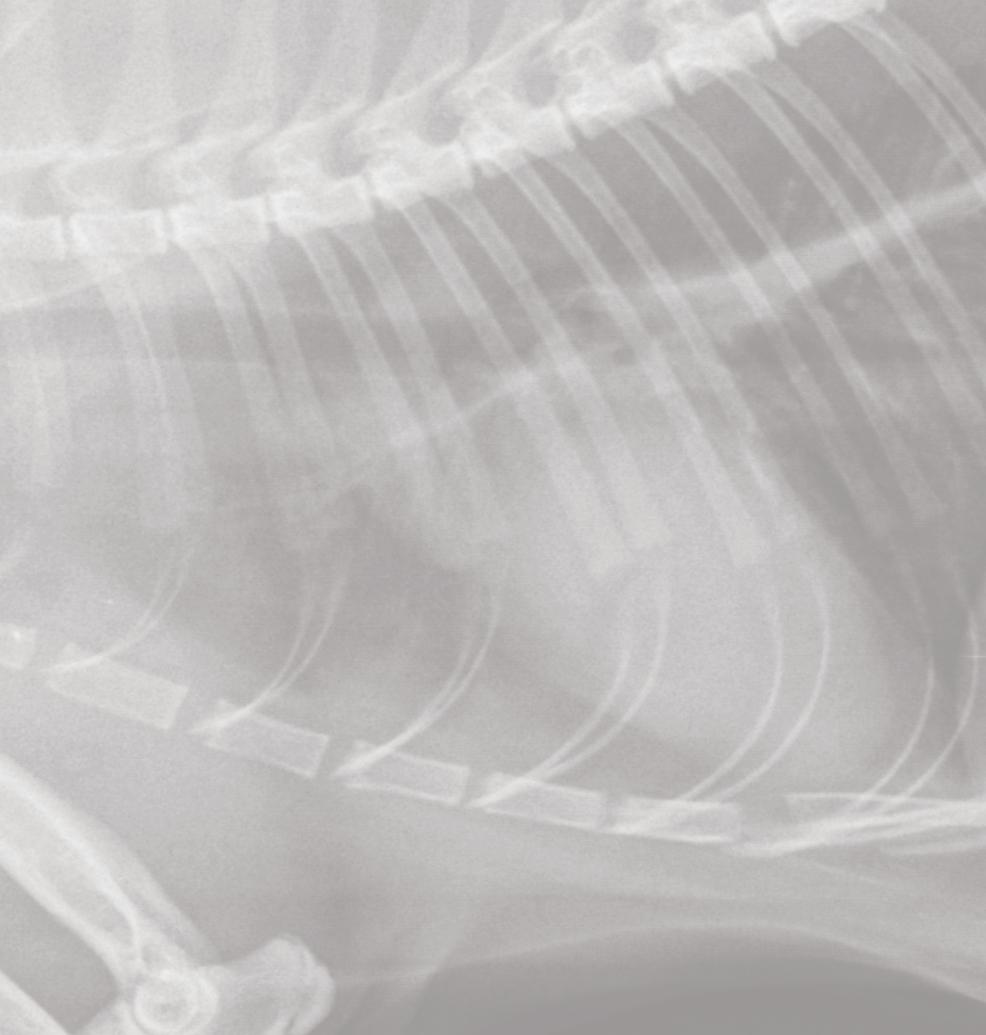
When a patient at the OVC Health Sciences Centre (HSC) requires diagnostic imaging—radiographs (X-rays), ultrasound, CT or MRI—the resulting images are sent to the OVC Diagnostic Imaging team for interpretation. The team is comprised of board-certified radiologists— veterinarians with specialized post-doctoral training in diagnostic imaging, like Appleby—diagnostic imaging residents, and student veterinarians. Radiologists oversee all activity on their service, as well as taking on a teaching role for student veterinarians and residents.
On a typical day, Appleby and his team begin with rounds at 8:00 a.m. This is when the team meets to discuss particularly interesting images from clinical cases, or review literature on important topics in diagnostic imaging.
By 9:30 a.m., the team begins to see patients. Radiology technicians acquire diagnostic images and send them to a resident—veterinarians who are completing postdoctoral training to become board-certified in veterinary radiology—to interpret. Residents write a report on the case, which is then sent to the overseeing radiologist for review. The report is then finalized and sent to the requesting veterinarian to inform diagnosis and treatment. The radiology team at the OVC HSC supports the client facing services such as internal medicine, surgery, emergency and critical care, oncology, neurology and others. In addition to his role as a clinician, Appleby is also a professor and researcher at OVC. His research program focuses on artificial intelligence (AI)—computer programs that can do tasks
The benefit of using AI in the field of veterinary radiology is the potential to improve quality of care and extend the reach of high-quality diagnostics. With AI-based practices, we will be able to better diagnose, predict and treat a variety of illnesses in animals.
which usually require human intelligence—and diagnostic imaging.
As Appleby reviews one of the many reports from his resident for today’s caseload, he shares some of the potential applications AI may have in his field.

“The benefit of using AI in the field of veterinary radiology is the potential to improve quality of care and extend the reach of high-quality diagnostics. With AI-based practices, we will be able to better diagnose, predict and treat a variety of illnesses in animals.”
“My current research aims to better understand how artificial intelligence can be safely implemented in the field of veterinary diagnostic imaging,” Appleby says. “The benefit of using AI in the field of veterinary radiology is the potential to improve quality of care and extend the reach of high-quality diagnostics. With AI-based practices, we will be able to better diagnose, predict and treat a variety of illnesses in animals.”
For example, graduate students in Appleby’s lab are working to develop AI that can assist in capturing X-rays. This would provide technicians with reliable guidance when taking an X-ray of an animal, which could reduce the number of re-takes needed. This means that pets could require less time under sedation and decreased exposure to radiation. It could also mean that X-rays would be of higher quality, reducing the likelihood of interpretation errors by the veterinarian or radiologist.
This is just one potential application of AI in the field of diagnostic imaging; Appleby believes that AI will be implemented in a wide variety of areas across veterinary medicine in the future.
“I expect that we will see AI being used in the near future to assess medical records, make writing medical records faster, assist in drug development—and likely many other tasks that I cannot even envision at this time,” he says.
Appleby believes that a combination of research and multi-institutional collaboration is needed to better develop our understanding and trust for AI’s responsible use in practice.
“If AI is developed properly with the appropriate ethical safeguards, we could see these systems used to help veterinarians identify diseases and determine the best treatment plan—supporting veterinarians by helping them make better decisions to improve pet health,” Appleby advocates. “These benefits could even extend to the animal’s owner by providing the most accurate information on the likely course of their pet’s disease, based on a combination of diag-
nostic images, laboratory results and medical record data.”

As amazing as these benefits are, Appleby cautions that AI development and use in veterinary medicine should be approached thoughtfully.
“The main risk posed to patients and owners is that AI will not be developed well or ethically. If we are not thoughtful in creating these systems, then we could end up where we are not answering the correct questions, or the AI is providing the wrong answer—providing bad information to practitioners and pet owners.”
Appleby acknowledges that there are already some AI systems available for interpretation of X-rays in dogs and cats, but they are largely unproven. He expects that within three to five years, we will see AI systems with better, research-backed accuracy that have potential to be more widely adopted in veterinary medicine.




“I believe that AI may fundamentally change the way we practice, and if done correctly—also improve life for our patients,” he says.
1 2 3
Top three things that Dr. Appleby wants you to know about artificial intelligence in veterinary medicine:
We are not at the point, nor will we ever be at the point, where AI is doing the work without a veterinarian present. There will always be a veterinarian looking at your pet’s diagnostics and involved in their care.
If you see charges associated with AI diagnostic interpretation on your bill for a veterinary visit, you have a right to ask your veterinarian what this means, and how it was used to assist in the diagnostic process.
Your pet’s medical records could be used to help develop AI systems for veterinary medicine, but those records will be anonymized by veterinary hospitals and diagnostic companies. Speak to your family veterinarian if you have any questions or concerns.
iStock photo credit: DKosig
CAT HEALTH
Tracking Iron Levels in Cats who Donate Blood

Dr. Shauna Blois
Feline blood donor programs space out blood donations to help prevent extra iron loss in donor cats. However, low hemoglobin levels occur only in the very late stages of iron deficiency, meaning that it won’t detect early stages. People who frequently donate blood often get low iron levels, but it is unknown if this is the same for cats. Ferritin, measured within blood, is a protein that reflects the body’s iron levels and is a good way to detect early stages of iron deficiency. In this study, ferritin and other indicators, like hemoglobin, will be measured in cats that are in a blood donor program over three years to see if regular blood donation causes iron deficiency. If iron deficiency is identified, strategies to prevent it will be implemented to ensure feline blood donors can maintain optimal health and ensure blood supply needed for critically ill patients is of high quality.
DOG HEALTH
Testing Better Ways to Store Blood Samples for Blood Clot Tests in Dogs
Dr. Anthony Abrams-Ogg
Many diseases cause extra blood clotting in dogs which can lead to strokes. Clopidogrel, a blood thinner, can help by affecting platelets, small blood cells involved in clotting. However, its effects vary a lot between patients. So, platelet tests are important to make sure the drug works. Unfortunately, these tests are not accessible to most clinics since they need special supplies and must be run no more than four hours after collecting blood samples. This research explores ways to store samples for longer so they can be shipped for testing. Samples with heparin (a type of blood thinner) added will be compared to those with citrate (an organic acid) to see if heparin preserves samples longer. The study will also see if using heparin can make the test more accessible by allowing clinics to use supplies that they normally stock.
Exploring the Link Between Behaviour and Seizures in Epileptic Dogs
Dr. Fiona James
Epilepsy is one of the most common brain diseases in dogs, negatively affecting both dogs and caregivers. Dogs with epilepsy often have behavioural issues, like fear and anxiety, which may have a connection with seizure activity. This study will examine the relationship between seizures and behavioural changes in epileptic dogs, which could allow for predictions of future seizure activity. Wearable biosensors will assess dog behaviour, like rest and activity levels. To track seizures, another device will record video and measure brain activity via electrodes on the scalp—a technology called electroencephalography, also known as EEG. Understanding the connection between behaviour and seizures will help improve the lives of dogs and caregivers. This study is the first of its kind to provide much-needed objective data of linking seizures with behavioural and environmental factors using actigraphy (wearable biosensors) and will hopefully highlight future investigations of seizure prediction in dogs.
16
iStock photo credit: FatCamera
Each year, OVC Pet Trust invests more than $600,000 in new projects and equipment to advance health and well-being for pets.
The Potential to Treat Tumours from Dogs with Cancer-killing Viruses
Dr. Khalil Karimi
Cancer is the most common cause of natural death in dogs. Mast cell tumors are a very common form of skin tumour. Several new therapeutic techniques in human oncology have recently been created; one technique is called oncolytic virotherapy—or using viruses that can target and kill cancer cells. Recent research recently proved that one such virus was very safe in treating mouse cancers. The research team has also created a new synthetic virus that is effective and safe in mouse cancers. This study will explore these two viruses on mast cell tumours preserved in the OVC Veterinary Biobank (formerly called the OVC Companion Animal Tumour Sample Bank) to evaluate if the viruses can kill the cancer cells. If successful, this study could provide the rationale for advancing the results into the translational pipeline as a novel treatment for dogs diagnosed with mast cell tumours.
Measuring and Evaluating Dogs with Gut Bleeding who were Treated with Steroids
Dr. Alice Defarges
Steroids are a common treatment for many autoimmune diseases in dogs, like immune mediated hemolytic anemia (IMHA) and immune mediated polyarthritis (IMPA). However, steroids can cause gut bleeding and ulcers. Finding these side effects is key for better recovery and correct treatment. Video capsule endoscopy (VCE) is a new way of checking the entire gut for bleeding. It is safe, simple and does not require the patient to be anesthetized. Using VCE, this study will improve patient outcomes by measuring the number of dogs with gut ulcers and bleeding who were treated with steroids for IMHA and IMPA. It will also determine if the rate of gut bleeding differs between dogs with IMHA and IMPA.
Investigating Infectious Pathogens in Dogs Imported into Ontario
Dr. Katie Clow
Each year, thousands of dogs are imported into Canada. Right now, depending on the country of origin and route of importation, there are few regulations that check the health of these imported dogs and control their movement. As a result, imported dogs may carry foreign or uncommon pathogens into Canada which can spread to other dogs, other species of animals and people. The welfare of imported dogs is also a concern. This study will partner with five Ontario humane societies to test recently imported dogs for infectious pathogens. The findings will be shared with veterinarians and rescue organizations. Results will also be used to create educational content for pet owners and provide recommendations for testing, isolation and preventive measures to enhance the safety of dog importation.
Examining How Lymphoma Affects a Blood Test for Kidney Disease in Dogs
Dr. Anthony Mutsaers
One role of the kidneys is to remove body wastes. When kidneys are weak, blood levels of some bodily waste products go up. This includes creatinine, which is measured to see how well kidneys are working. Recently, another waste product, SDMA, was found to be potentially better at identifying kidney disease. However, some dogs with lymphoma, a common cancer, have more SDMA without other kidney disease signs. If lymphoma affects SDMA, then SDMA should not be used to detect kidney disease in these dogs. SDMA could also be useful to better understand lymphoma. This study will examine if dogs with lymphoma have higher SDMA. SDMA and creatinine will be measured in blood samples from dogs before, during and after chemotherapy. Ultrasound kidney exams will also be reviewed, and lab work will help determine if dogs with higher SDMA have kidney disease.
Magnesium as a Form of Pain Relief in Dogs after Spinal Surgery
Dr. Francesca Samarani
Spinal surgery is common to treat spinal cord injury in dogs. However, there is a lack of standardized pain management for animal patients after the surgery. Human medicine has shown that adding magnesium into veins during spinal surgeries improves pain management and lowers post-surgery inflammation. The study will investigate if this is also true in dogs. It will evaluate the effects of magnesium given during spinal surgery on post-surgery pain and inflammation in dogs. The results will help provide a better postsurgery recovery and improved patient experience.
Lung Fluke Surveillance in Dogs
Dr. Scott Weese
P. kellicotti is a lung fluke (flatworm) that can cause severe disease in dogs, who get it by eating infected crayfish. It is also in some water sources in North America. Little is known about how common or widespread this parasite is in Ontario. This study will evaluate the presence of P. kellicotti in healthy dogs in Bruce and Huron counties, regions where dogs recently got sick from it. P. kellicotti will be identified through fecal samples since eggs are shed in feces. A questionnaire will ask about exposure to water sources. The study will also test another way to detect P. kellicotti using the “Flukefinder” device. Results will help provide a preliminary assessment of the presence and distribution of P. kellicotti in dogs in Ontario; it will also inform educational content for veterinarians and dog owners about this parasite.
Early Detection of Lymphoma in Dogs with a Simple Blood Test
Dr. Geoffrey Wood
Cancer in dogs is often diagnosed late into the disease when it has spread within the body and is harder to
treat. A group of small molecules found in blood, called microRNAs, have been shown to be different in dogs with cancers versus healthy dogs. Previous research looked at blood samples in dogs before lymphoma diagnosis and found molecules that were potentially able to predict this cancer before signs of disease show up. This study will confirm the researchers’ initial findings. It will use blood samples from dogs that were diagnosed with lymphoma and compare the microRNA levels to those of healthy dogs that never got cancer. This research aims to show that a simple blood test could one day be used as an early-detection system for cancer in dogs.
Predicting How Disease Progresses in Dogs with Mast Cell Tumours
Dr. Darren Wood
Mast cell tumours are common skin tumours in dogs. Predicting the behaviour and progression of this type of tumour can be difficult. MicroRNA are small molecules that play a role in the development of various cancers. Many studies have shown that certain microRNAs can provide a lot of information about specific cancers, such as length of remission and overall survival. This study will assess whether microRNA can help predict the way that cancer progresses with mast cell tumours in dogs and foresee which patients may have a longer survival time or have recurrent or aggressive disease with a shorter time of survival.
COMPANION ANIMAL HEALTH

New Strategies to Treat Respiratory Diseases Caused by Bacteria in Dogs and Cats
Dr. Grazieli Maboni
Mycoplasmas are bacteria in dogs and cats that cause respiratory infections like fatal pneumonia. They are very complex, and a lack of consistent testing methods makes the bacteria hard to manage. Current treatment mainly uses antibiotics. However, there is little information on the effect of antibiotics against these bacteria. This may lead to issues like unsuccessful treatment and antibiotic resistance. This study will explore the effect of antibiotics on mycoplasmas. This will help improve treatment guidelines and effective diagnosis for respiratory diseases caused by mycoplasmas in dogs and cats.
17
iStock photo credit: Viktorcvetkovic
Why did you pursue a career in veterinary medicine and then go on to specialize as a veterinary criticalist?
I grew up on a beef ranch in southern Alberta and I was constantly around animals as a child. After vet school, I worked in general practice in Nova Scotia and Alberta for about two years, which is when I decided to apply for an internship at OVC. Originally, it was my intent to specialize in small animal surgery, which did not end up working out. But, in every cloud there is a silver lining; after my internship, I had a job lined up at an emergency practice when I got a phone call from Dr. Karol Mathews, who had recently created Canada’s first veterinary Intensive Care Unit (ICU) at OVC and was looking for a resident to join her program. I was accepted and became the first ever Emergency and Critical Care (ECC) resident in Canada—a position that was funded by OVC Pet Trust. Many of the same requirements of the job that originally attracted me to surgery were also important skills in ECC: hand-eye coordination, thriving in high-stress situations, and the constant mental challenge of complicated medical cases. I am a techie at heart, and the sophisticated equipment we work with is also an interesting part of the job. In ECC, there are truly never two days that are the same. I would say some of the personality traits that have helped me succeed in this field are my ability to triage and prioritize my patient’s needs and being able to stay calm under often stressful conditions in an extremely fastpaced environment.
What would you want pet owners to know about the field of emergency medicine and critical care?
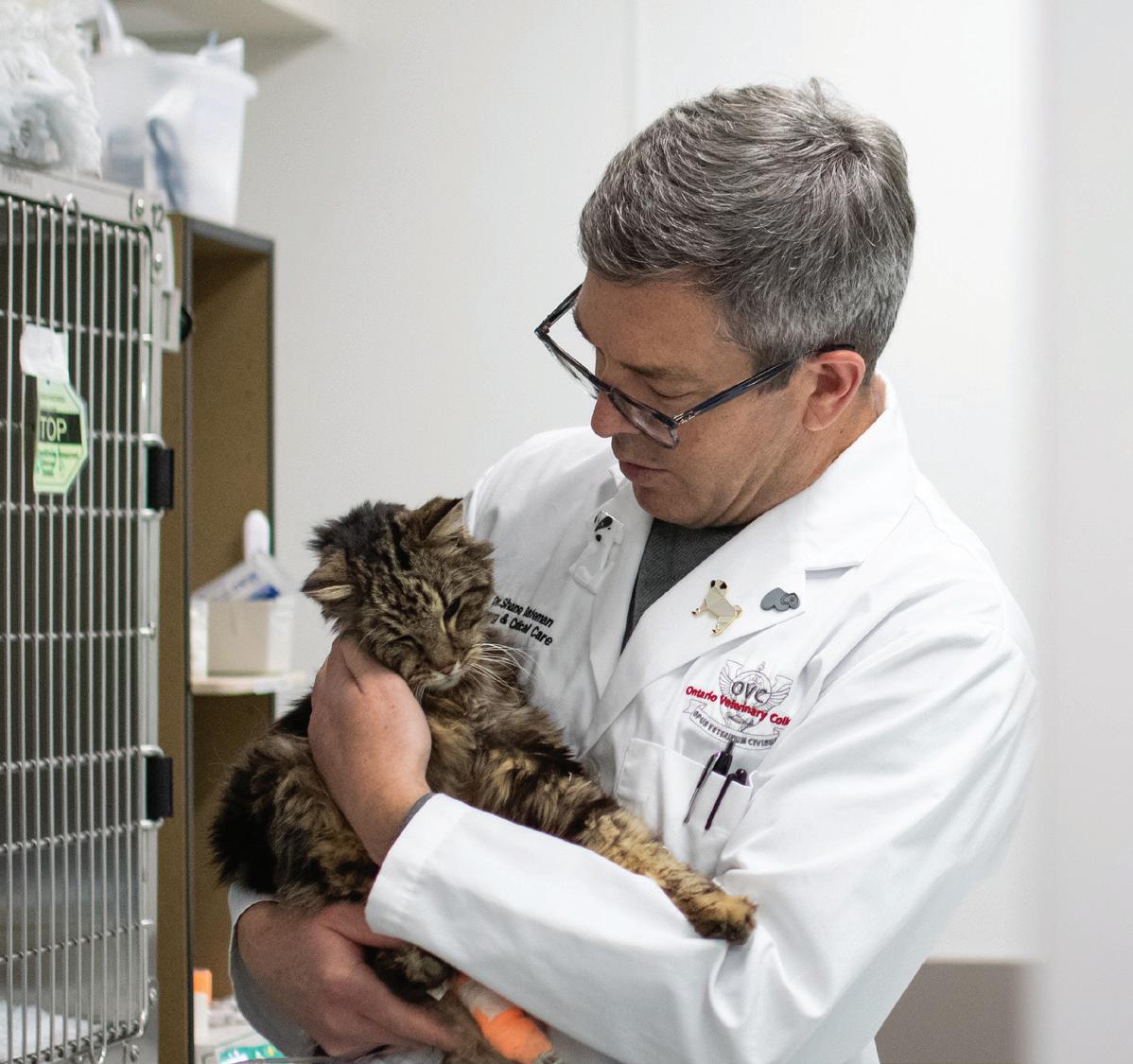
In both veterinary and human hospitals, ICUs are where the sickest, most critical patients receive highly skilled, professional care. Life and death decisions must be made quickly, and it is important that pet owners are clear-headed when we start down a path or treatment plan, especially given that these situations can be incredibly sensitive and emotionally charged. Innovations in care and equipment allow us to have the tools to be at the forefront of patient care. We can do a lot of things for your pet—but should we do all those things? It is important to me to work with our clients to determine the right balance for what is right for our patient and for their family: what are the benefits and the burdens of our treatment decisions? Are we still on the same page for what is best for the animal as we move forward? My patient cannot talk but I am constantly looking out for their interests. These circumstances can be difficult to handle, and I enjoy helping our students, interns and residents learn how to navigate difficult situations with skill and confidence.
What research projects are you currently working on?
My ECC research, which has been supported by OVC Pet Trust, explores the challenges cats face while hospitalized in the ICU. Many hospitalized cat patients are on intravenous (IV) fluids—a universal hospital treatment, which is often necessary for lifesaving and supportive care—but cats can be susceptible to complications on fluid support, including fluid accumulation in their lungs, which may lead to difficulty breathing. The problem has existed for decades, and my goal through our research is to the make the fluid administration process safer for our feline friends.
What do the new ICU facilities at OVC mean to you and what benefits will they provide for your patients and their families? For OVC’s trainees and team members?
It is a stunning gift for our team to be able to move into a much larger, much more state-of-the-art facility—a space that prioritizes the welfare of animals and people at its core. The thoughtful design, lighting (programmed to mirror the circadian rhythms of our shift workers), space and comfort are top of mind. There is a dedicated space for cats, including a soundproof door that closes, which we know decreases stress in cats and may even improve recovery time.
What are your passion projects?
Being involved in veterinary outreach—volunteering and offering care to underserved communities—has given me the opportunity to witness the power of the human-animal bond from a different lens than in the ICU. One of our core purposes at OVC is to prepare veterinarians of the future – and, the future, as I see it, is one that ideally includes collectively addressing the inequities of our society. Social and health benefits from animal ownership are immense for all members of our society. If we can find ways to preserve the human-animal bond
18
Photo: ICU patient Basil with Dr. Bateman. Photo credit: Katie Duncan.
Dr. Shane Bateman
Associate Professor and Critical Care Specialist Department of Clinical Studies Ontario Veterinary College (OVC) University of Guelph
by providing better access to care, the world will be a better place. My hope is that through OVC’s Kim and Stu Lang Community Healthcare Partnership Program (CHPP), our students will graduate and go out into the world and be part of an army of people who want to see the world be different for people who love animals —not just for the people who can afford it. One of my current projects aims to create an innovative digital platform to pair people who are looking for support with those who are in a position to give; this would mean using technology to break down access to care barriers by matching people who need services or resources with those who can donate or offer it.
My interest in animal welfare has also recently led me to pursue earning a Master’s degree in Veterinary Forensic Science—a relatively new field that will allow me to serve as an expert witness when animals are involved in the law or in legal proceedings. My hope is to integrate information about
this field into our Doctor of Veterinary Medicine curriculum in the future to better prepare veterinarians to recognize and report animal abuse or intentional injury to animals, and effectively work with law enforcement when these situations arise.

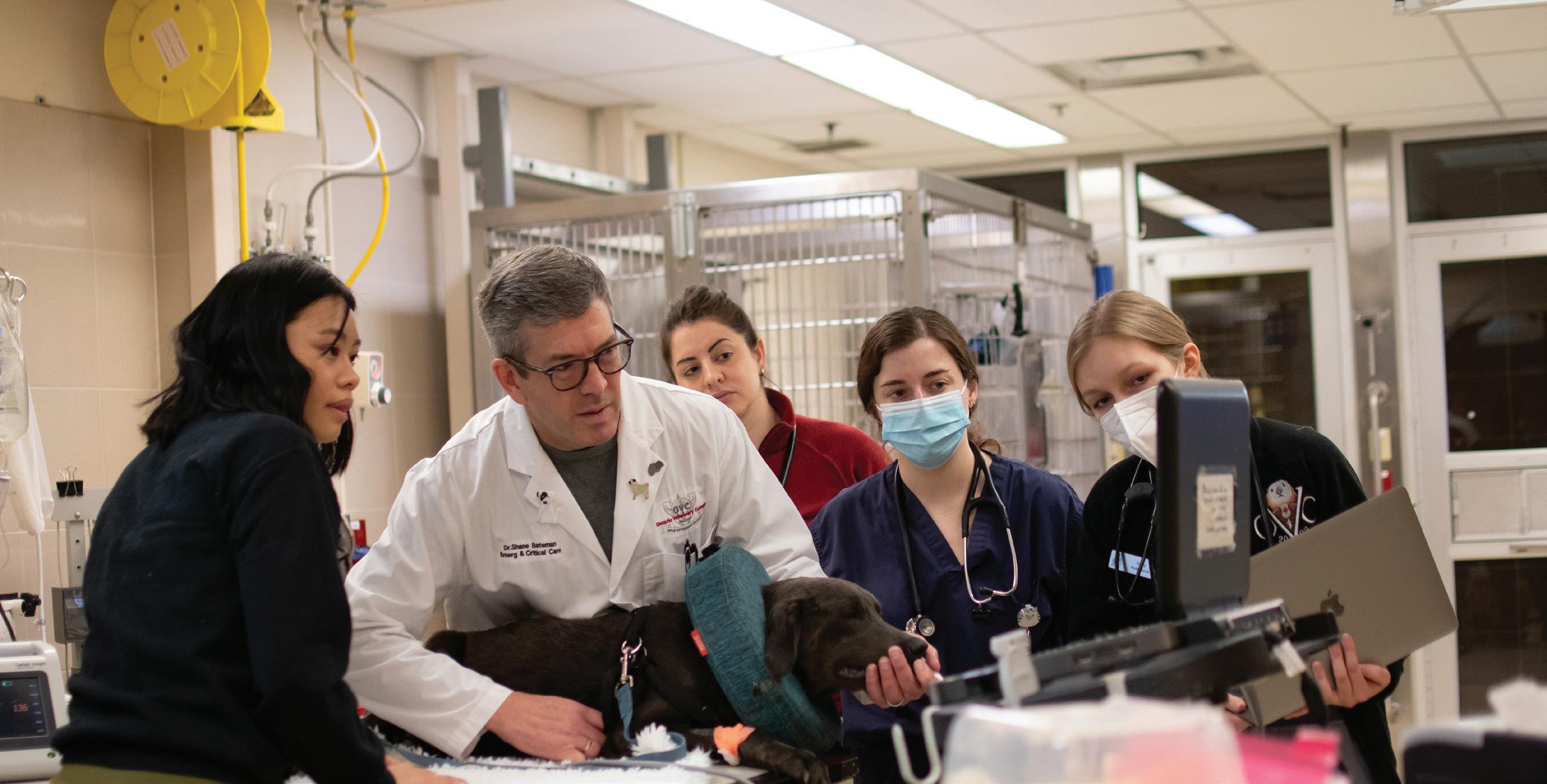
What does the humananimal bond mean to you?
On the darkest and hardest days of my professional career, when I go home and question life, I realize it is really the privilege of a lifetime to make space for and bear witness to the incredible power of the human-animal bond. It is at the core of every inspiring aspect of my career.
Do you share your home with any pets?
Three cats—all adopted from the Guelph Humane Society: Cooper, Melbourne and Phoebe.
19
ICU patient Louie is examined by Dr. Bateman and team.
Photo credit: Katie Duncan.
Emergency patient Elliot is treated in the triage and urgent care space within the ICU. Dr. Bateman performs a point-of-care ultrasound while teaching the students and residents on the Emergency & Critical Care Service. Photo credit: Katie Duncan.
SHOWCASING OVC’S NEW CLINICAL FACILITIES
$8.36 million OVC Pet Trust capital campaign creates new intensive care unit and expands specialty services areas at OVC Health Sciences Centre

The Ontario Veterinary College (OVC) is a world leader in veterinary education, innovation and care. The OVC Health Sciences Centre (HSC) offers more than just medicine: our veterinary teams are the guardians of our most critical patients requiring complex, emergency and advanced health care. In 2023, the OVC HSC opened new facilities entirely funded by OVC Pet Trust supporters.
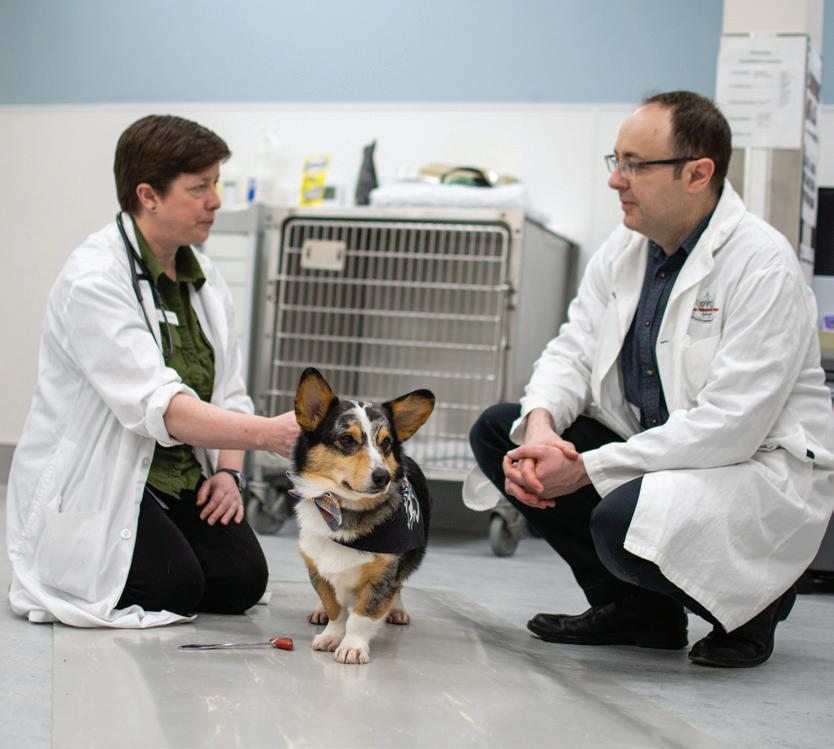
20
Photography by Katie Duncan
Neurology patient Deku (above and left) is evaluated by Drs. Luis Gaitero and Jude Morton in the new Dana-Zara Specialty Services Suite.
The $8.36-million capital expansion project created a new Intensive Care Unit (ICU), where OVC’s most critical patients are treated. Renovations included expanding the ICU by more than 2,200 square feet, a new space for veterinary emergency services and triage and flexible space to accommodate patient care needs and named the Catherine Bergeron Centre for Urgent and Critical Care. Two new specialty service areas were also built, which are home to the the OVC Neurology and Ophthalmology teams: the Dana-Zara Specialty Services Suite and the Dalwood Ophthalmology Suite, respectively. The new modernized spaces prioritize animal welfare; allow for improved teaching and educational experiences for students and trainees – the next generation of health leaders; and help the sickest of the sick. Meet some of the first patients treated in OVC’s new ICU, neurology and ophthalmology facilities.
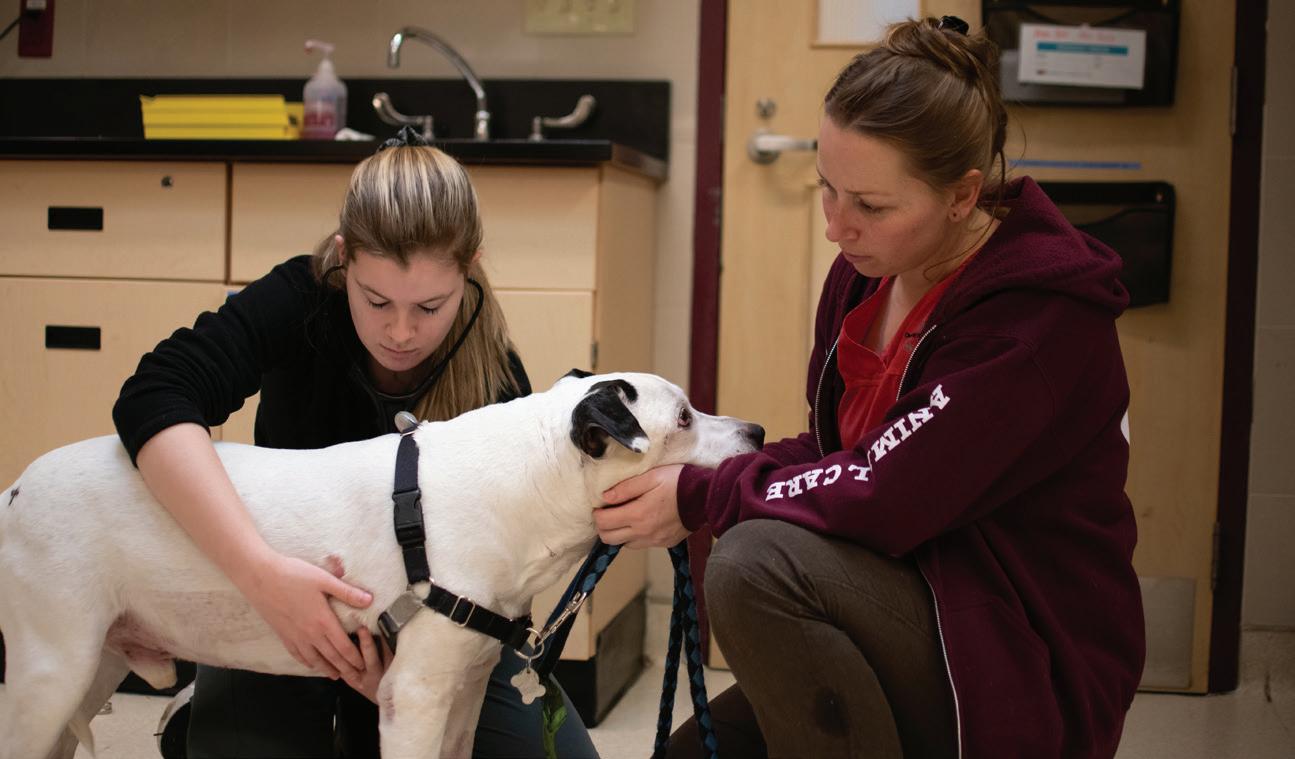

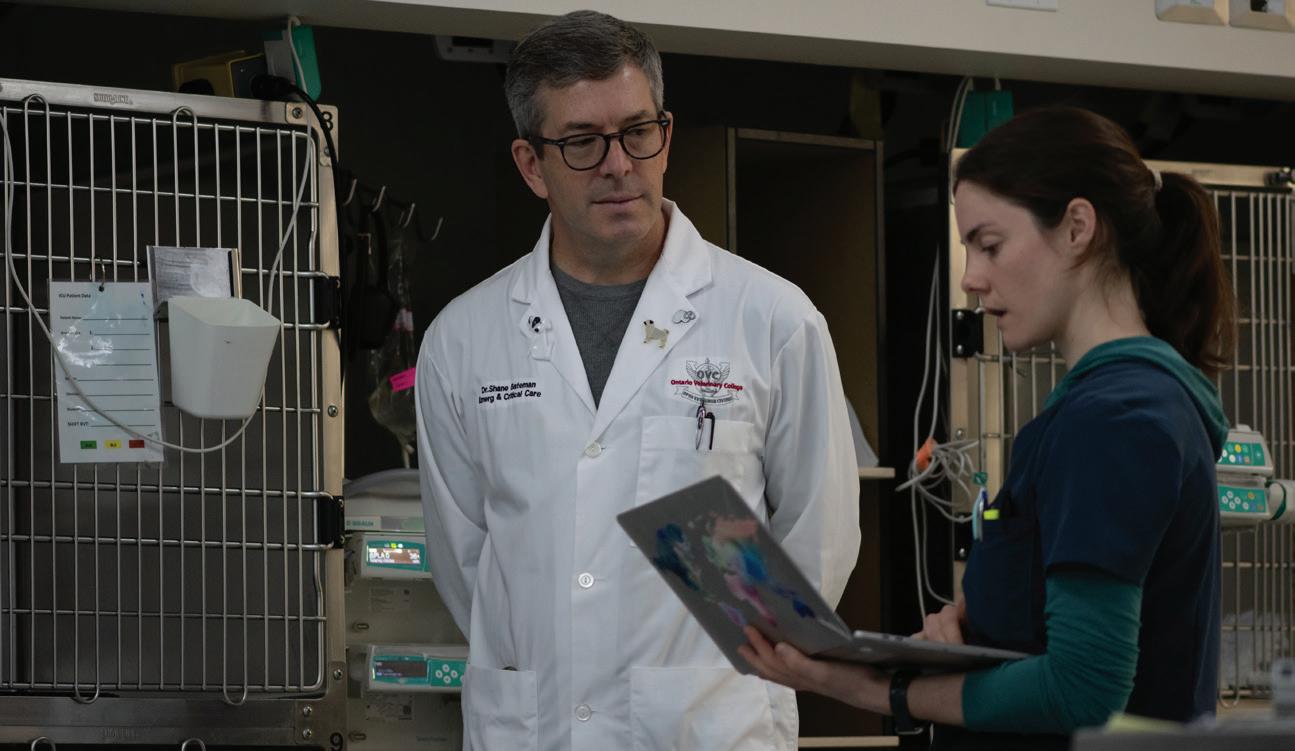


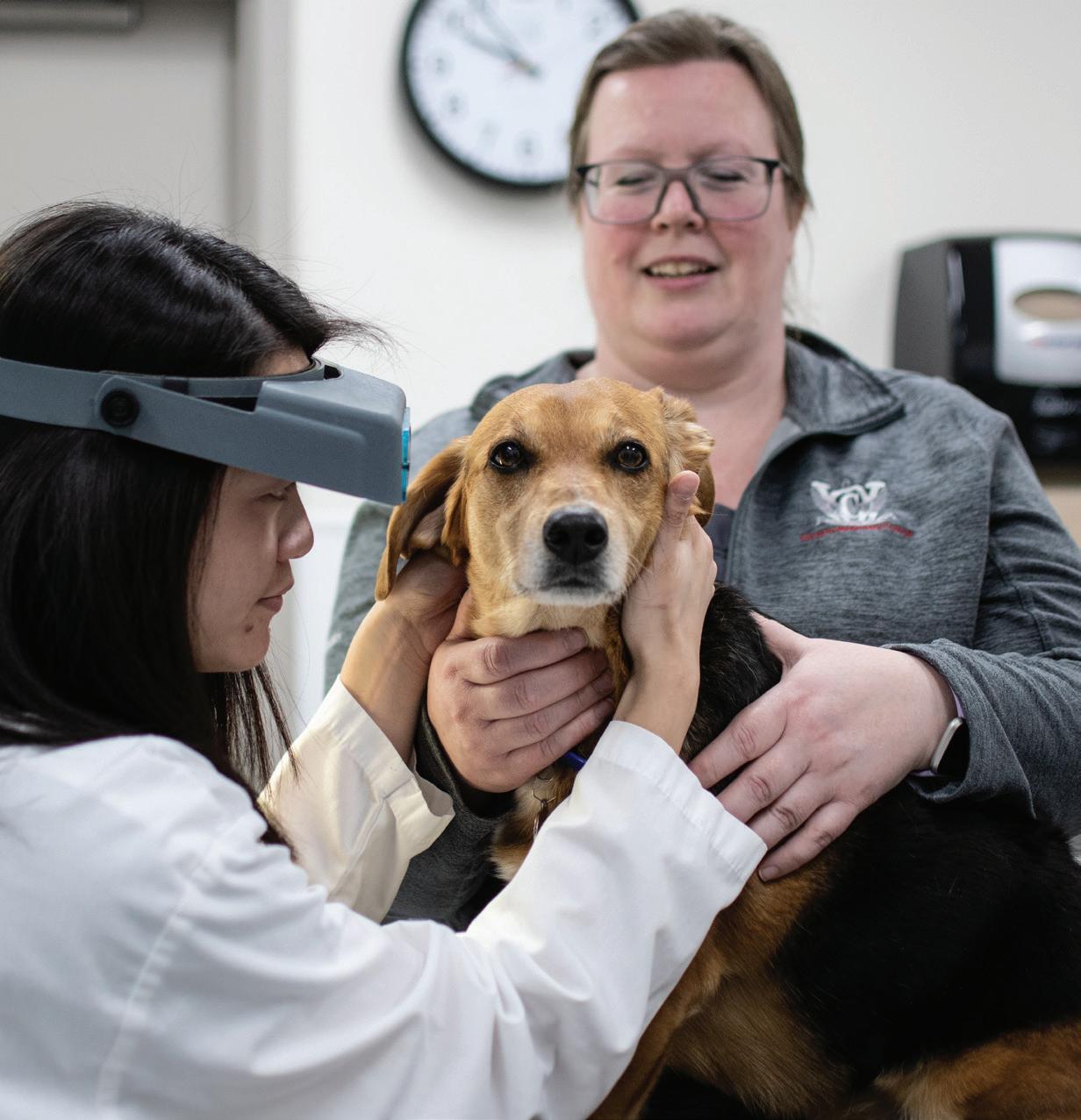 OVC critical care specialist Dr. Shane Bateman checks on cat patient Higgins in the ICU Cat Quiet Room.
OVC animal care attendant Rachel checks on ICU patient Louie before his morning treatment (right). Louie is examined by his care team (left).
Drs. Shane Bateman and Manon Rigot (Emergency and Critical Care Resident) discuss patient conditions, progress and treatment plans during “rounds,” a process in medicine when teams discuss each individual patient’s status and care plan.
Charlie is examined by OVC intern Dr. Sonja Ing and Registered Veterinary Technician (RVT) Jennifer in the new Dalwood Ophthalmology Suite.
Patient Tookie is examined by his veterinary care team in the ICU.
by Suzi Beber
OVC critical care specialist Dr. Shane Bateman checks on cat patient Higgins in the ICU Cat Quiet Room.
OVC animal care attendant Rachel checks on ICU patient Louie before his morning treatment (right). Louie is examined by his care team (left).
Drs. Shane Bateman and Manon Rigot (Emergency and Critical Care Resident) discuss patient conditions, progress and treatment plans during “rounds,” a process in medicine when teams discuss each individual patient’s status and care plan.
Charlie is examined by OVC intern Dr. Sonja Ing and Registered Veterinary Technician (RVT) Jennifer in the new Dalwood Ophthalmology Suite.
Patient Tookie is examined by his veterinary care team in the ICU.
by Suzi Beber
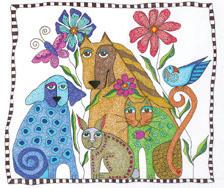
Suzi Beber founded The Smiling Blue Skies ® Cancer Fund in 2001 after losing her Golden Retriever, Blues, to lymphoma. To honour his memory, and in gratitude for the care he received at OVC, Smiling Blue Skies has raised more than $2.1 million to support OVC Pet Trust’s quest to find more and better ways to deal with canine cancer.
Together, Always, Just “Six Degrees of Separation”

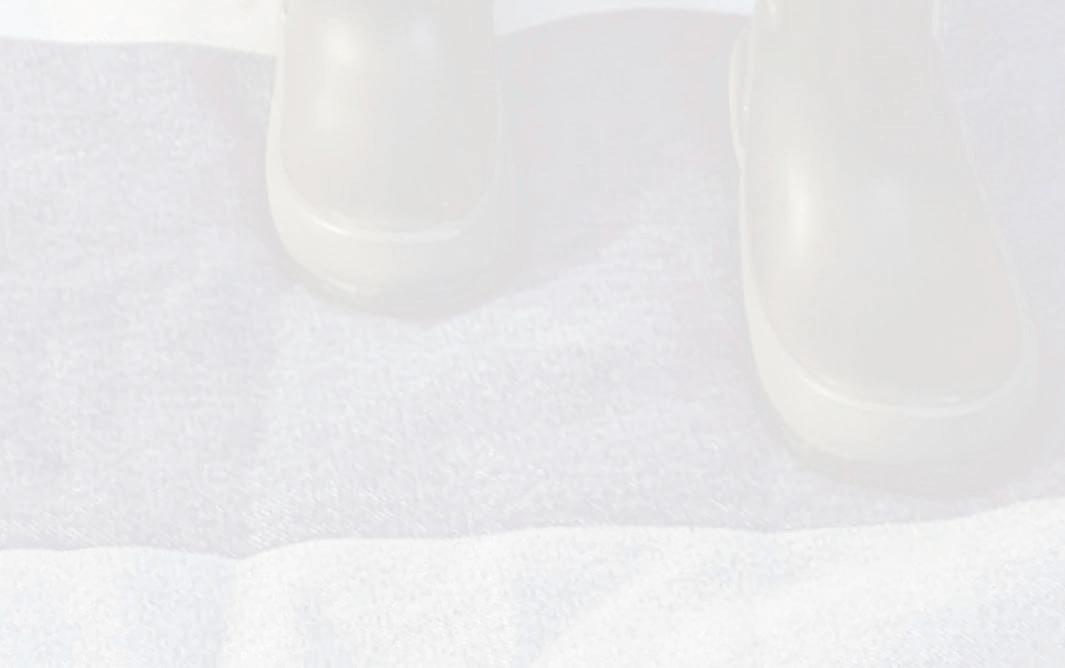
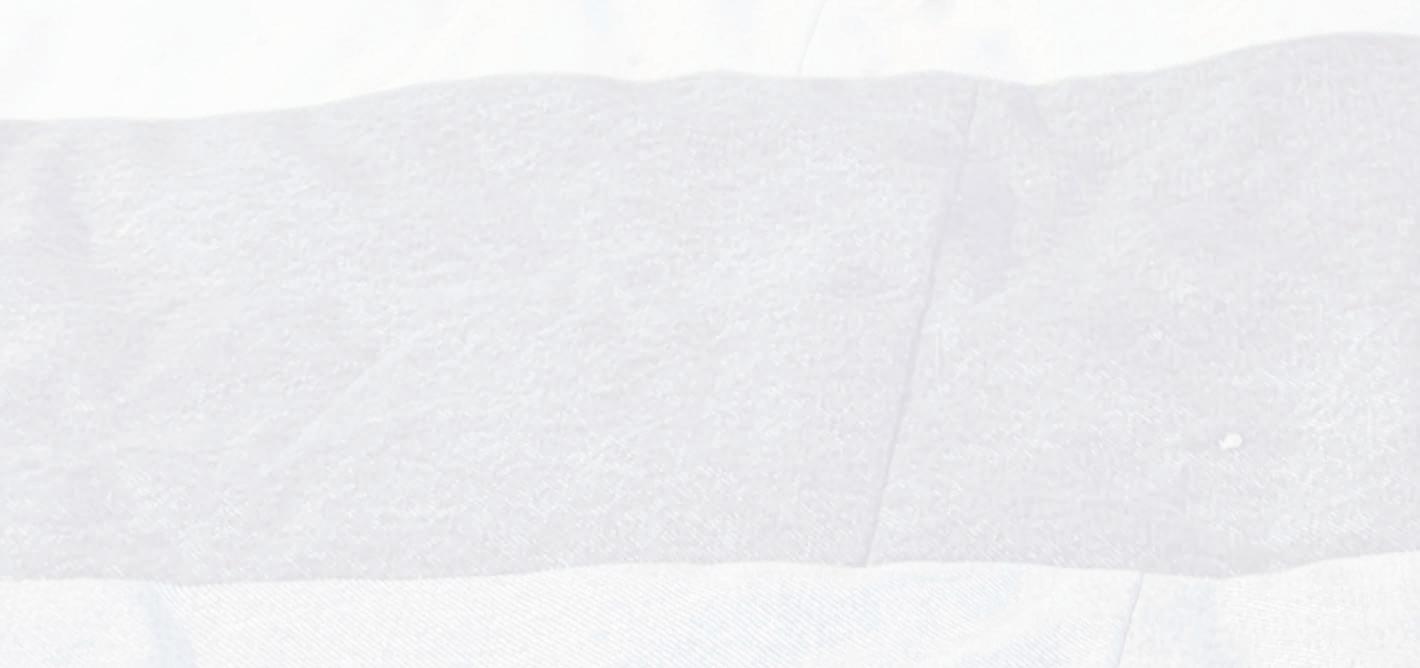
It is hard to believe that we are on the cusp of spring. Here on the west coast, winter roses are dotting the landscape, snow drops are popping up everywhere, and the first of the daffodils, harbingers of renewal and hope, are bringing smiles to everyone’s faces.
I want to turn back the clock here though and tell you a little bit about a special event that took place as 2022 was ending and 2023 was just beginning: Pat Richardson’s “Hannah’s Hope Scavenger Hunt,” honouring Hannah, and all the pets who have been lost to cancer or who are battling cancer right now. While most participants were from the Calgary area, a few from British Columbia participated too. Can you imagine if an event like this could spread from coast to coast?!
Eight people and their dogs found all “31” items, but…best of all, more than 475 fun
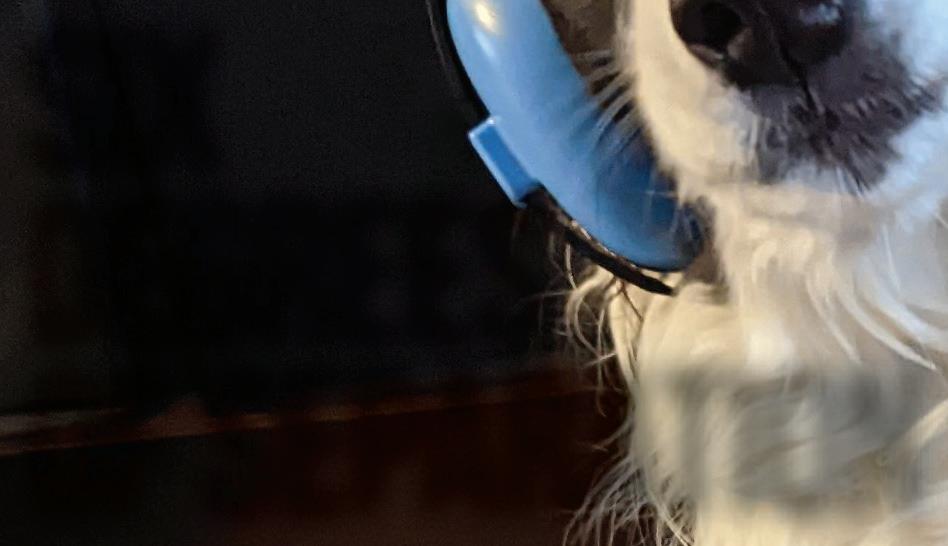

photos were submitted by the teams! It was wonderful to learn about all the dogs participating, from “Outlaw,” the Belgian Shepherd, a Diabetic Alert dog, who is also busy doing nose work and pet therapy in schools, to “Snickers,” a Pembroke Corgi, who loves doing tricks and dock diving, to… wait for it, “Hexadecimal,” who loves catching frisbees, hiking and agility. I wish I could list them all.
Every dog had their own prop, so the photographs were amazing, with some great laugh out loud moments. There was everything from a “Holee Roller” ball to a Christmas Turkey hat, a red purse, mittens, a box of donuts, earmuffs, and rubber boots (for real), and even red runners. Pat was amazing. Every time someone posted a photo of their dog(s) with “finds,” Pat responded with the “googly eyes emoji.” Perfect! I wish you could see all the photos of the “finds”. Thanks to everyone who participated, $1,700 was raised for The Smiling Blue Skies Fund for Innovative Cancer Research.
Thanks to the “Pets Plus Us” program, members are given the opportunity to increase their monthly premiums with a “top up” to support a charitable organization of their choosing. Thank you to everyone who chose Smiling Blue Skies for 2022, and to “Pets Plus Us” for their ongoing support.

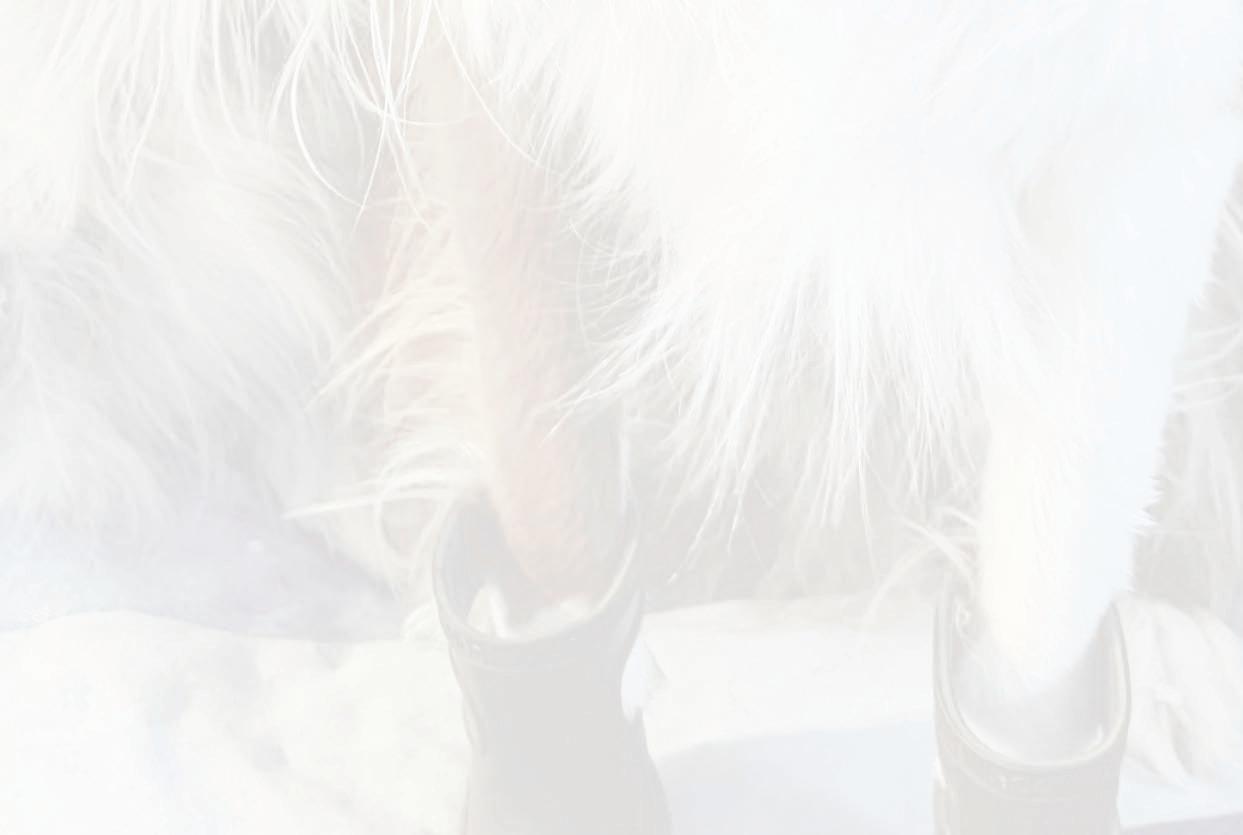

On Sunday, May 7, the 20th anniversary of Calgary’s Smiling Blue Skies Walk for Canine Cancer was held, at beautiful North Glenmore Park. Since 2010, the Calgary Team has raised an incredible $340,893!!! Check out news from the event on the Smiling Blue Skies website, at www.smilingblueskies.com and on Facebook, for updates and photos.
Here’s to Spring, the season of renewed Spirit and Hope. Thanks for your support. “Long live blue skies, where Hope is a kite and dreams really do come true.”
In photo: “Earmuffs and Boots”. Photo credit: Lissette French.
Honour a Best Friend and Give Back to Pet Health
Did you know that you can support OVC Pet Trust through our Pet Memorial Program?
Each year we send more than 45,000 memorial letters to pet owners who have lost a pet. Gifts made in honour or in memory of a beloved pet support advancements in companion animal health at the Ontario Veterinary College.
Thank you to everyone who chooses to give back to improving and advancing companion animal health and well-being in this meaningful way.
Visit our website to learn how to make a gift at www.pettrust.ca/donate
Share Your In Memory Story



Pets leave paw prints on our hearts. Have you recently lost a beloved companion whose memory has been honoured with a gift to OVC Pet Trust?
Connect with us on social media or contact us via email to share your story.
Email: ovcpet@uoguelph.ca facebook.com/ovcpet twitter.com/ovcpettrust
Instagram: @ontvetcollege
Dear OVC Pet Trust,
Mimi has been gone from our lives since last spring, but I still see her out of the corner of my eye. She was not the cat we came to the shelter to see, but when we arrived, she let us know she did not appreciate how long she had to wait for us to bring her home.
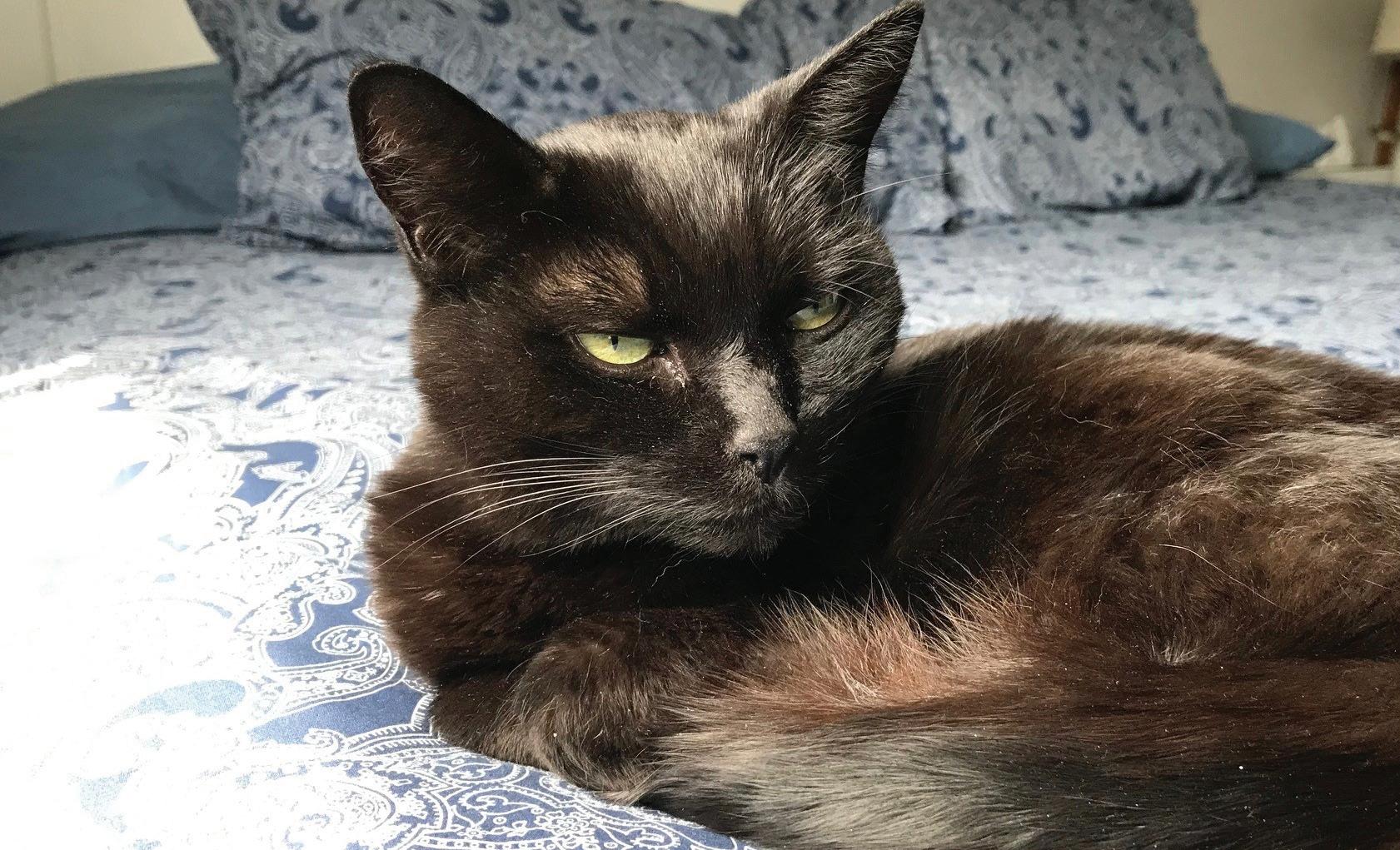
We reflect on that first encounter often. She ran up my husband’s leg, something she never did again, and curled up on my lap and purred—extraordinary because, as it turns out, she was not a lap cat. Ten years later, we said goodbye, but it was a period during which we experienced the transformative capacities of tenderness, time, love and trust.
We learned in those early weeks that Mimi was afraid—a lot. She ran and hid when she heard the crinkle of a plastic bag; she had nightmares and leaped into the air in terror when, seconds before, she was enjoying a deep sleep; she trembled, her heart racing; and she did not seek comfort, content to sit on the edge of whatever room her new family inhabited.
But, over time, she learned that our young son was a gentle creature, that my husband knew a million games that were fun to play, and that I would never hurt her. While


PETS IN MEMORY
cooking dinner, I got into the habit of scooping her up and holding her close. When she moved her body, signalling she’d had enough, I returned her gently to the floor, and she returned to the corner of the room to watch me. Not a vocal cat (at the beginning), it took me months to realize that when she went into the kitchen and meowed, she was asking me to come from wherever I was in the house to pick her up. She was seeking comfort and affection. That first time, she purred and purred, and we were overjoyed.
Over time, we learned more about her. She was playful, and in the evening, when my husband was reading quietly, she would caper—leaping high in the air, like a circus performer, to get his attention. Laser pointer, hide-and-seek, chase a toy. She left her spot at the corner of the room to lay down in the action, while our son pretended that she was a ferocious monster. She obliged by gently batting whatever Lego creature he deployed to bring down the beast.
We came to understand that all cardboard boxes, plastic bags, folded blankets and bubble wrap were cozy spots, just for her. She ate breakfast when we did, went to bed when we did, and if I was hollering across the house for my husband, she yelled, too.
And she waited, not patiently, for her turn in the shower—standing under the drips until her head was soaking wet. And, little by little, day by day, she came closer to me: first, sitting beside me; then, leaning on me, and if I placed a pillow on my lap, she would climb up so I could pet her.
One warm evening, too warm for pillows, she tentatively tapped her paw on my thigh until she screwed up the courage to curl up on my lap. It was thrilling. The effects of whatever trauma she had experienced did not disappear completely. Every once and a while, a nightmare would wake her from one of the many little beds she had all around the house, but she was happy.
We were honoured that she chose us and delighted by how tightly she stitched herself into our family. She impacted our lives profoundly. We were moved when a friend honoured the place she held in our lives by donating to OVC Pet Trust in her name. The organization reflects our values, but as I reflect on Mimi’s life, I realize how appropriately named the organization is, because trust is at the centre of healing.
Christina & Family Guelph, Ontario
23
PET TRUST PALS
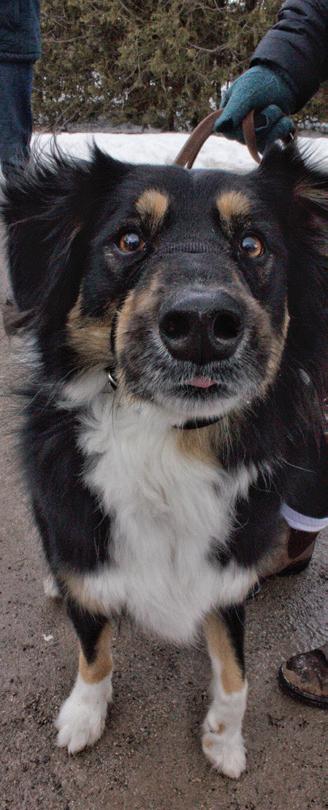
1. Hannah’s Hope Scavenger Hunt, organized by Pat Richardson, raised more than $1,700 for The Smiling Blue Skies Fund for Innovative Cancer Research. The event honoured Hannah (pictured) and all pets who have been lost to cancer or who are currently battling the disease.
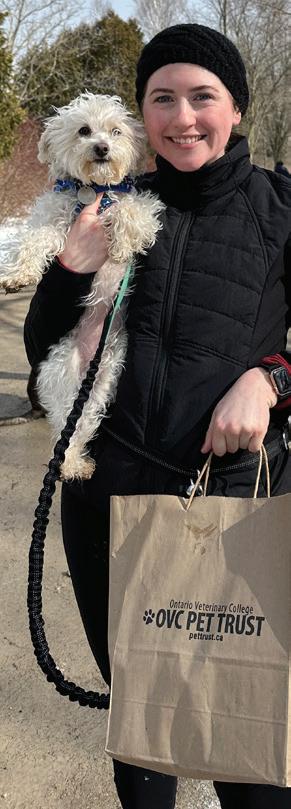

2. Punk for Paws, a live concert fundraiser for OVC Pet Trust, raised more than $2,100 in fall 2022. Thank you to event organizer and OVC student veterinarian Nicole Iarusci and to all sponsors, donors, bands and concert goers for their support.

3. The 13th Annual OTS Dog Jog was held on March 18 at the University of Guelph Arboretum and raised more than $11,100 to benefit OVC Pet Trust. Since the event began in 2011, more than $130,000 has been raised in support of companion animal health and well-being.
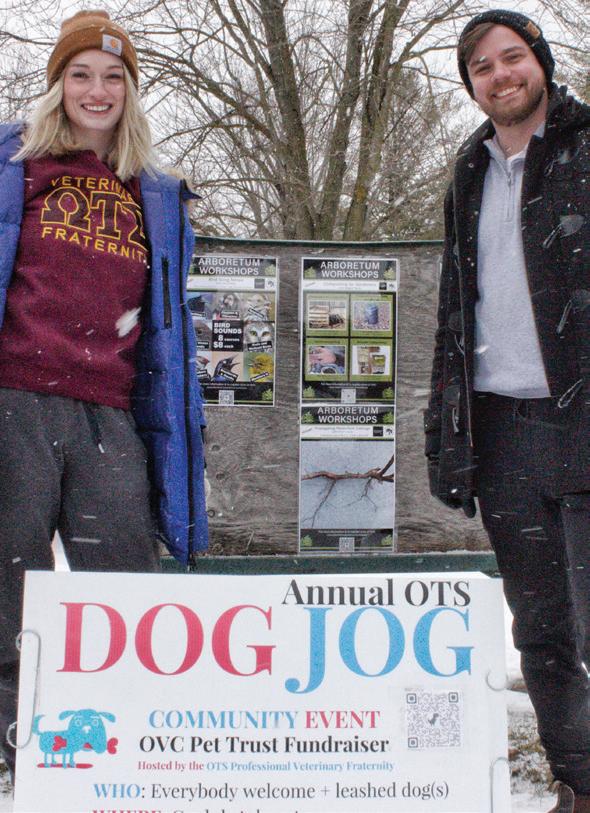

4. Teddy Bear Surgery at OVC made its comeback for the 99th College Royal Open House Weekend in March 2023. The OVC Class of 2024 provided an interactive opportunity for 570 kids to perform “surgery” on stuffed animal friends who needed a mend. They also showed kids how to bandage and care for their friends when they had been discharged and sent home to recover.
IF UNDELIVERED, PLEASE RETURN TO SENDER: Ontario Veterinary College, University of Guelph 50 Stone Road East, Guelph, Ontario Canada N1G 2W1
Attention: OVC Pet Trust, OVC Main Building, Dean’s Office

OVC Pet Trust is part of the University of Guelph, a registered charity. You can visit our website to support companion animal health at www.pettrust.ca.

www.pettrust.ca
Connect with OVC Pet Trust on social media to share your stories and photos: Facebook (facebook.com/ovcpet), Twitter (@OVCPetTrust) and Instagram (@OVCPetTrust).
CANADA POST - POSTAGE PAID PUBLICATIONS MAIL 40064673
PET TRUST
OVC
The
1829
WWW.PETTRUST.CA
University of Guelph charitable registration number: 10816
RR 0001
4 1 2 3 4 WATCH OUR VIDEO TO SEE HOW OVC PET TRUST IMPACTS COMPANION ANIMAL HEALTH
find the video online
Or
at uoguel.ph/petswelove.





















































 Kim Robinson Director, OVC Pet Trust Ontario Veterinary College University of Guelph
Kim Robinson Director, OVC Pet Trust Ontario Veterinary College University of Guelph





 OVC APPOINTS NEW ASSOCIATE DEAN TO UPHOLD CLINICAL PROGRAM’S STRONG TEACHING REPUTATION
OVC PET TRUST APPOINTS NEW BOARD CHAIR
OVC APPOINTS NEW ASSOCIATE DEAN TO UPHOLD CLINICAL PROGRAM’S STRONG TEACHING REPUTATION
OVC PET TRUST APPOINTS NEW BOARD CHAIR























































 OVC critical care specialist Dr. Shane Bateman checks on cat patient Higgins in the ICU Cat Quiet Room.
OVC animal care attendant Rachel checks on ICU patient Louie before his morning treatment (right). Louie is examined by his care team (left).
Drs. Shane Bateman and Manon Rigot (Emergency and Critical Care Resident) discuss patient conditions, progress and treatment plans during “rounds,” a process in medicine when teams discuss each individual patient’s status and care plan.
Charlie is examined by OVC intern Dr. Sonja Ing and Registered Veterinary Technician (RVT) Jennifer in the new Dalwood Ophthalmology Suite.
Patient Tookie is examined by his veterinary care team in the ICU.
by Suzi Beber
OVC critical care specialist Dr. Shane Bateman checks on cat patient Higgins in the ICU Cat Quiet Room.
OVC animal care attendant Rachel checks on ICU patient Louie before his morning treatment (right). Louie is examined by his care team (left).
Drs. Shane Bateman and Manon Rigot (Emergency and Critical Care Resident) discuss patient conditions, progress and treatment plans during “rounds,” a process in medicine when teams discuss each individual patient’s status and care plan.
Charlie is examined by OVC intern Dr. Sonja Ing and Registered Veterinary Technician (RVT) Jennifer in the new Dalwood Ophthalmology Suite.
Patient Tookie is examined by his veterinary care team in the ICU.
by Suzi Beber


















